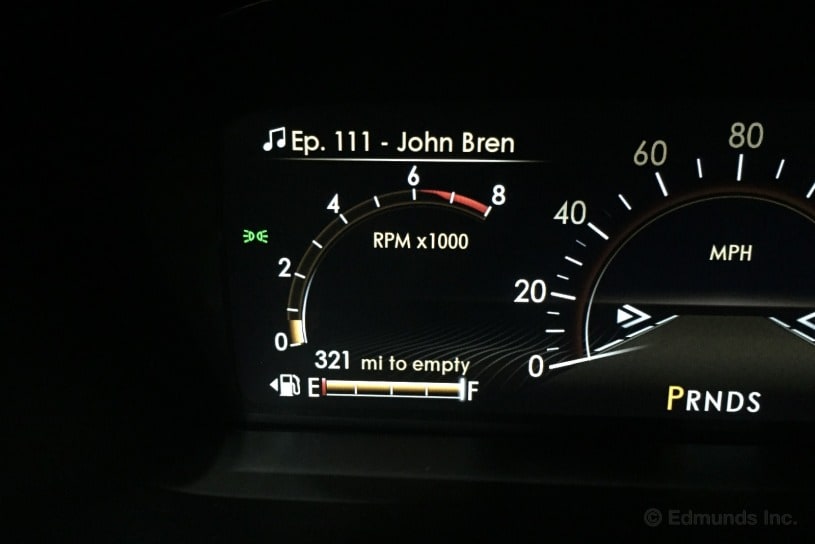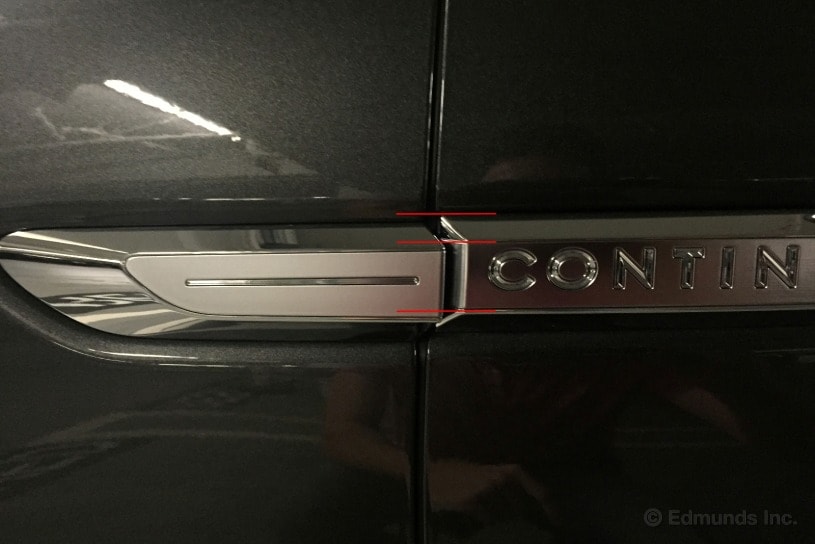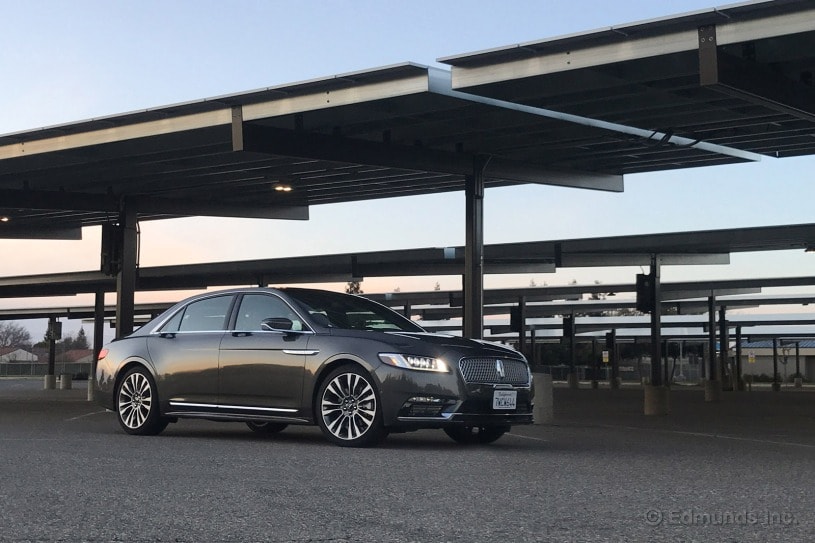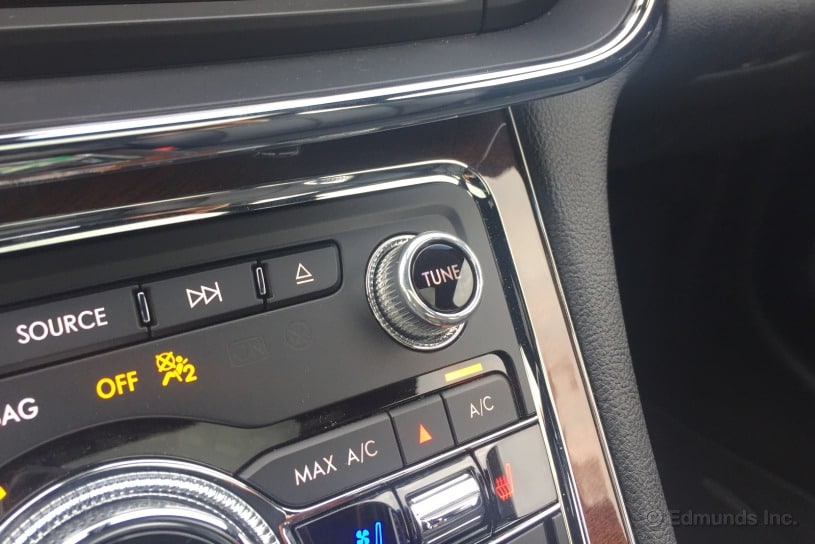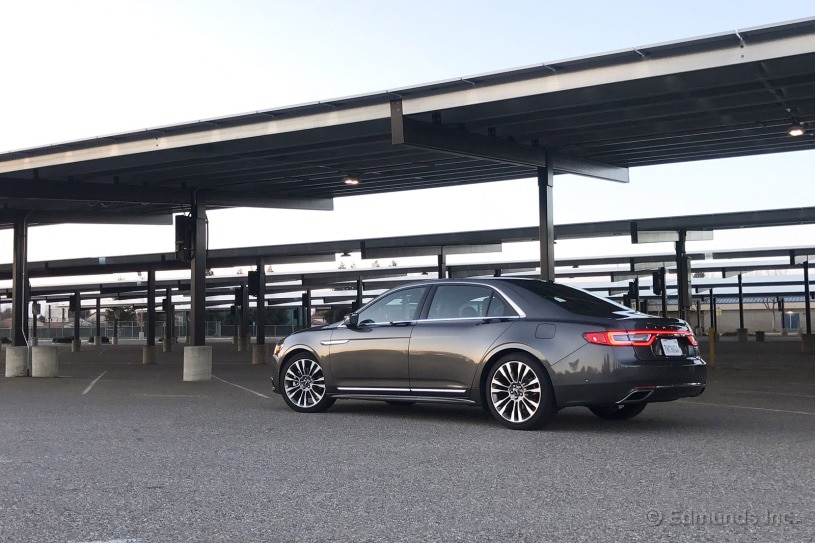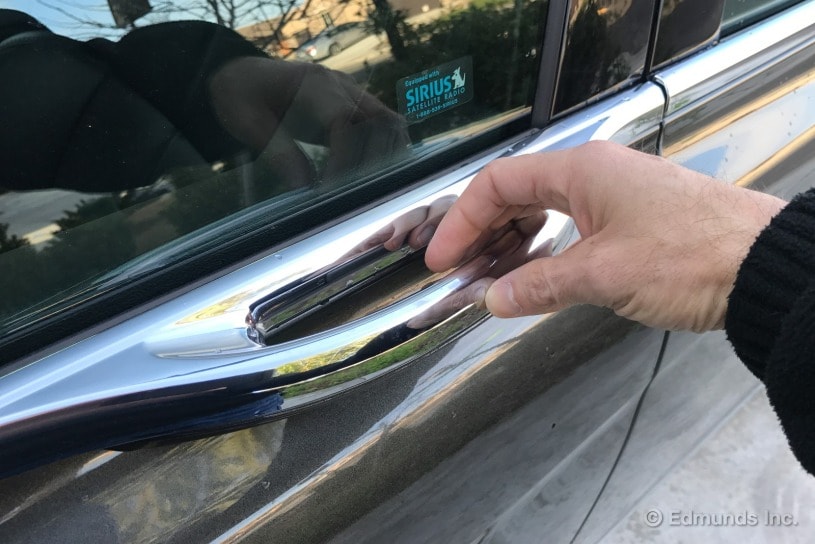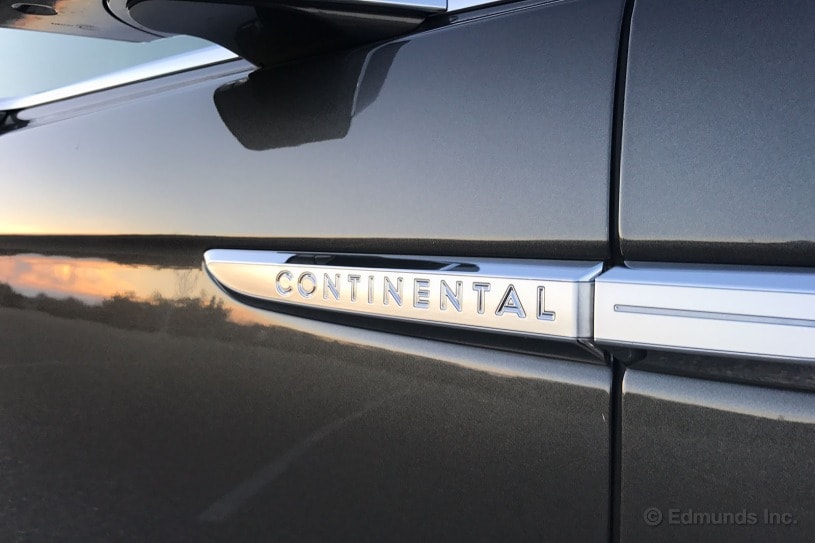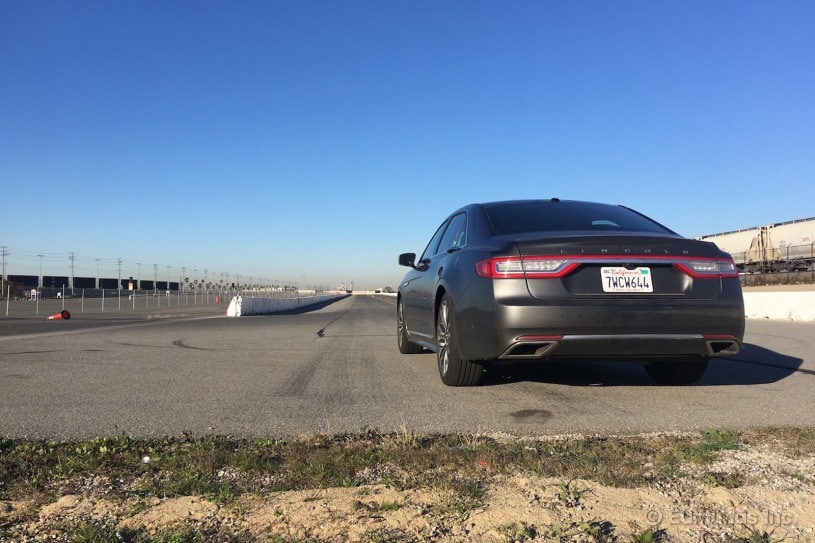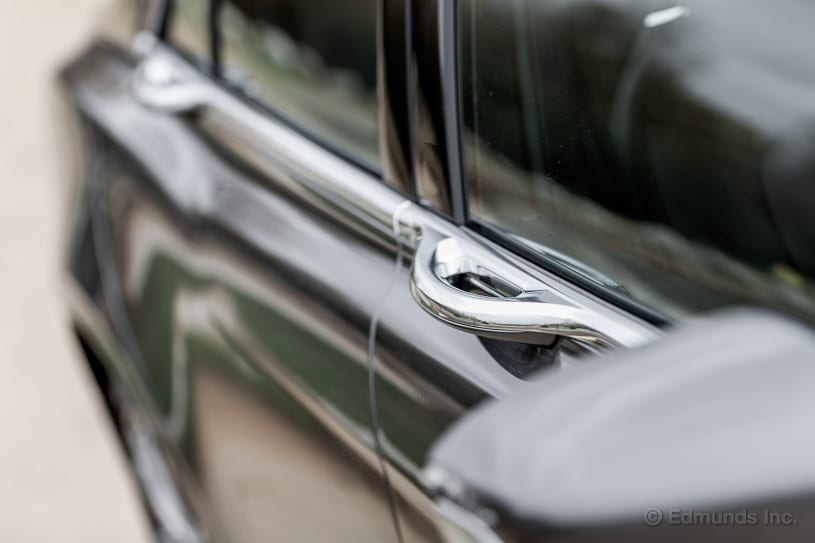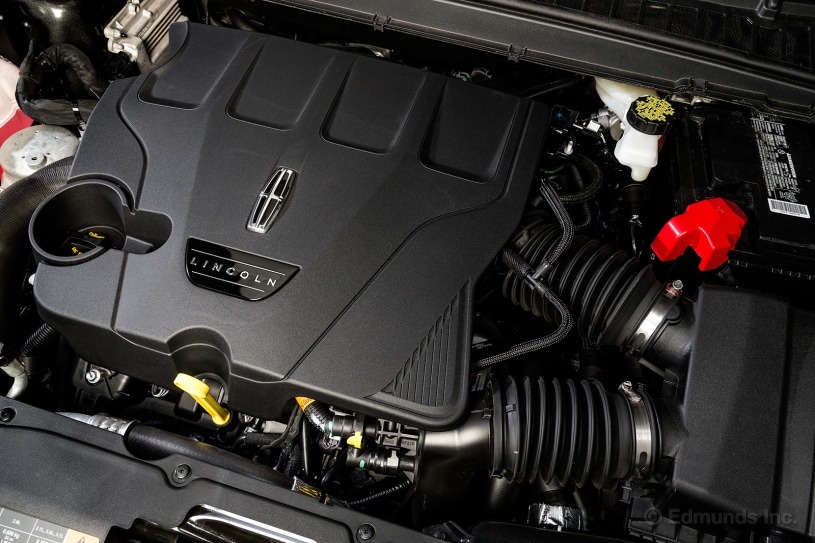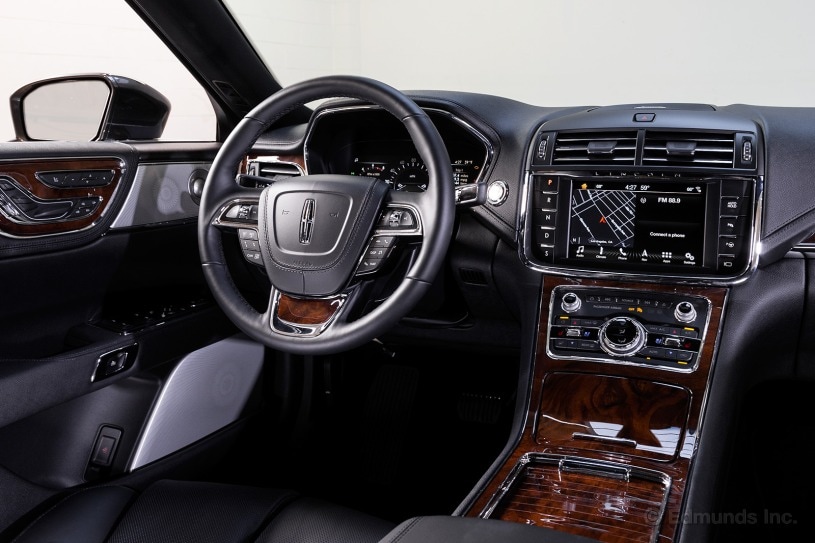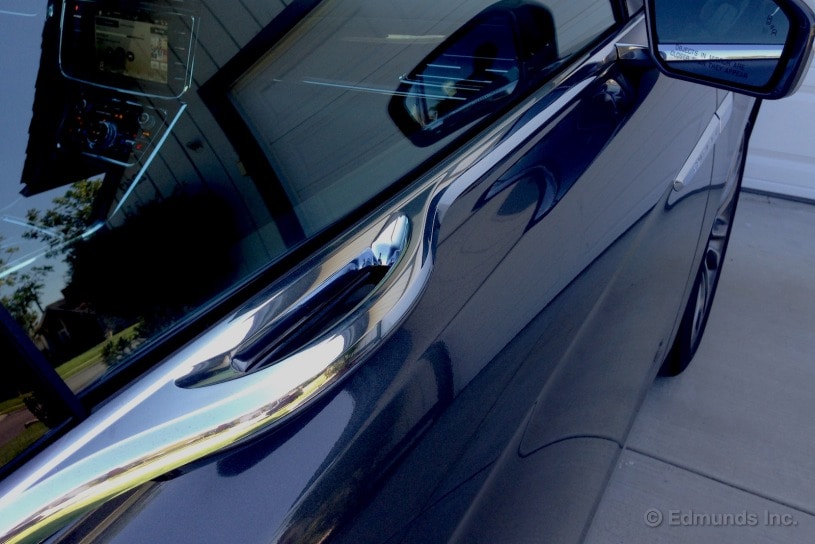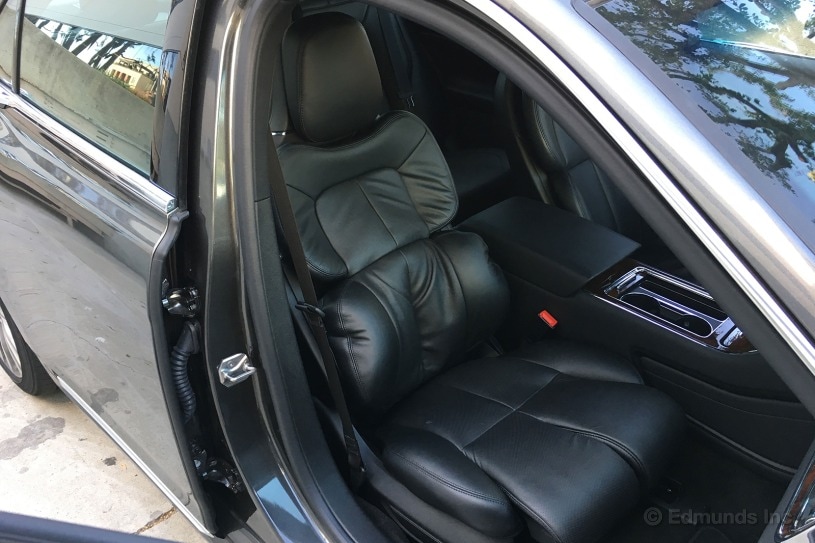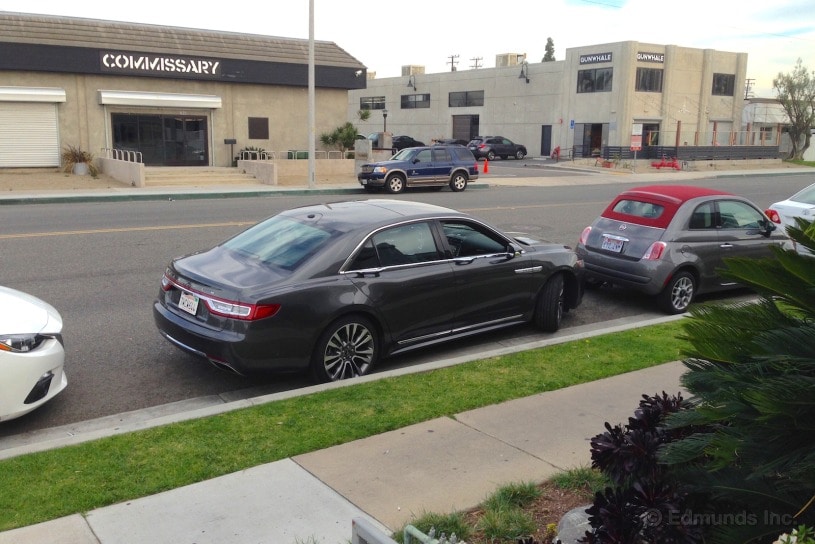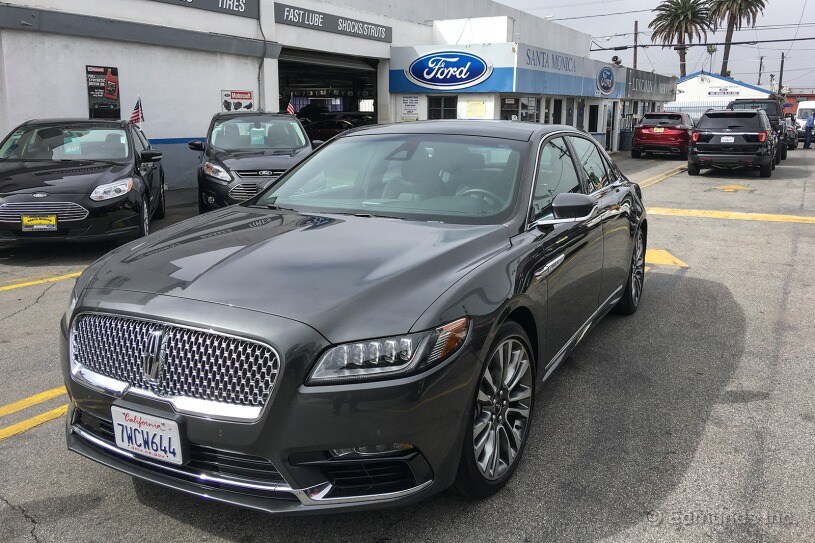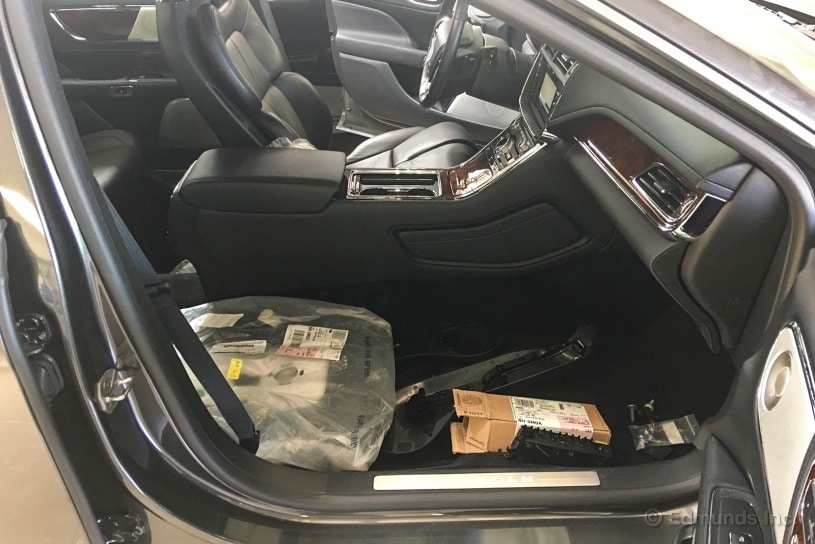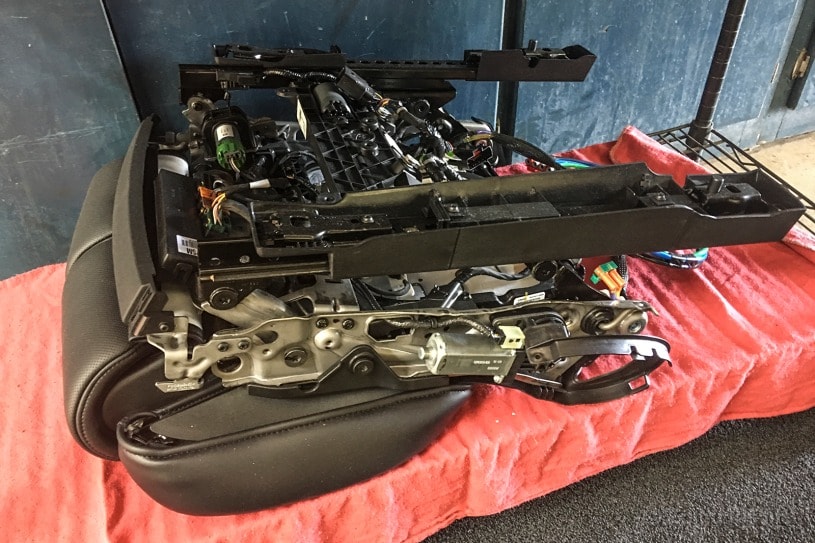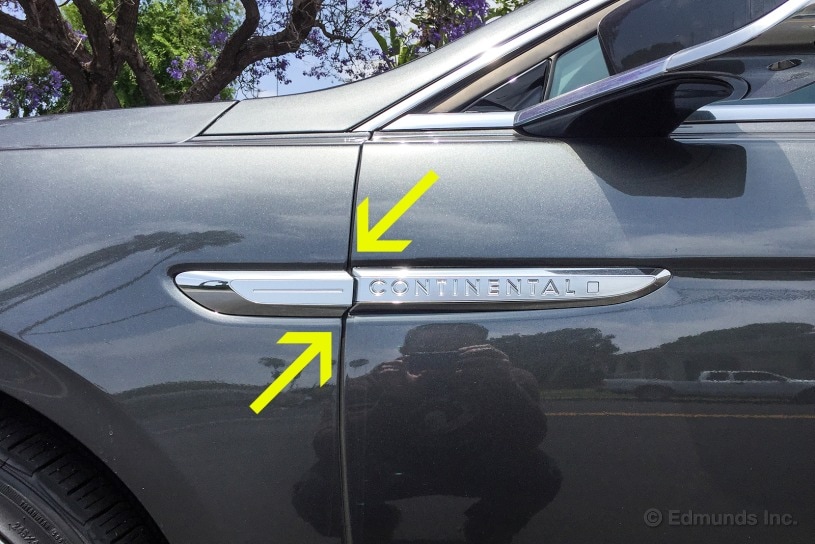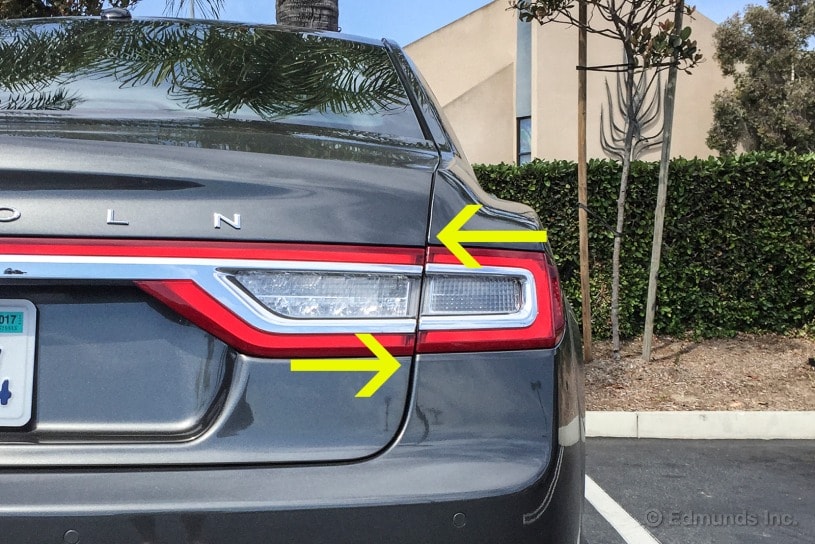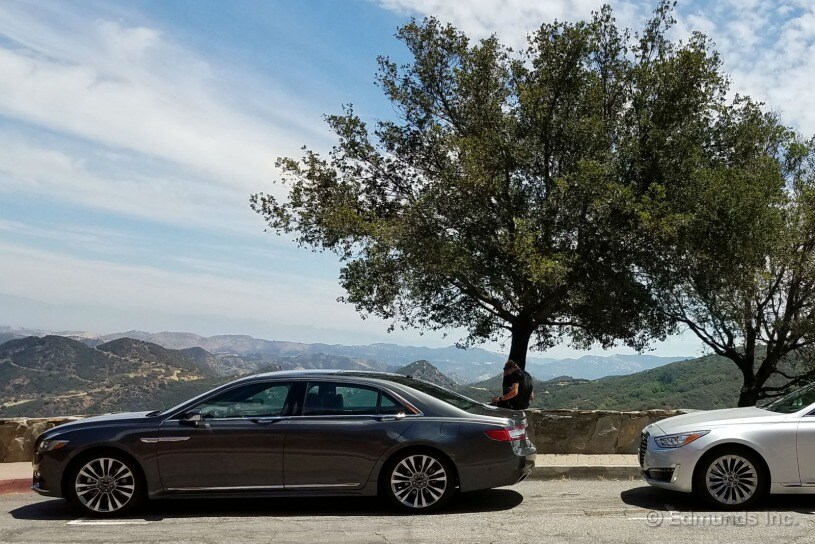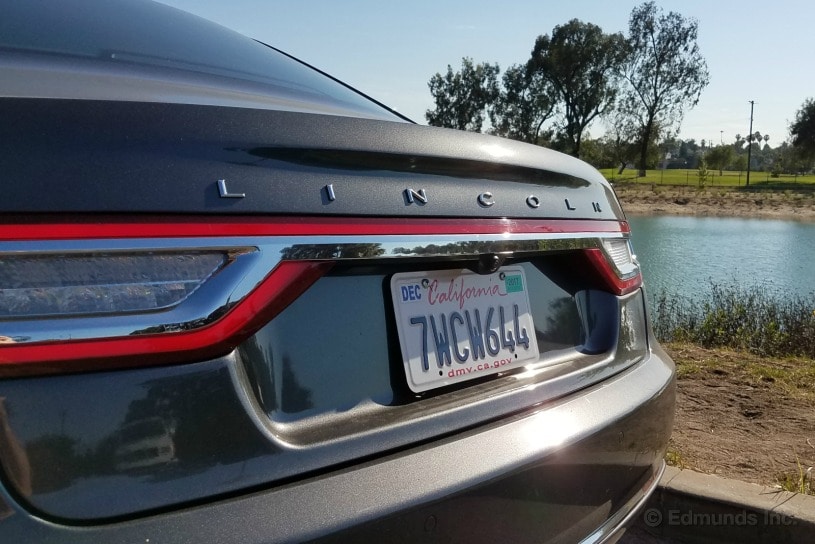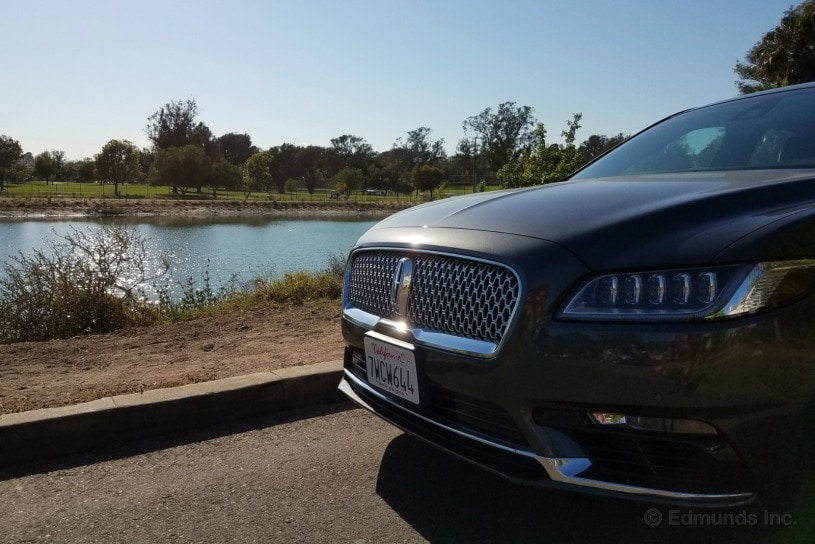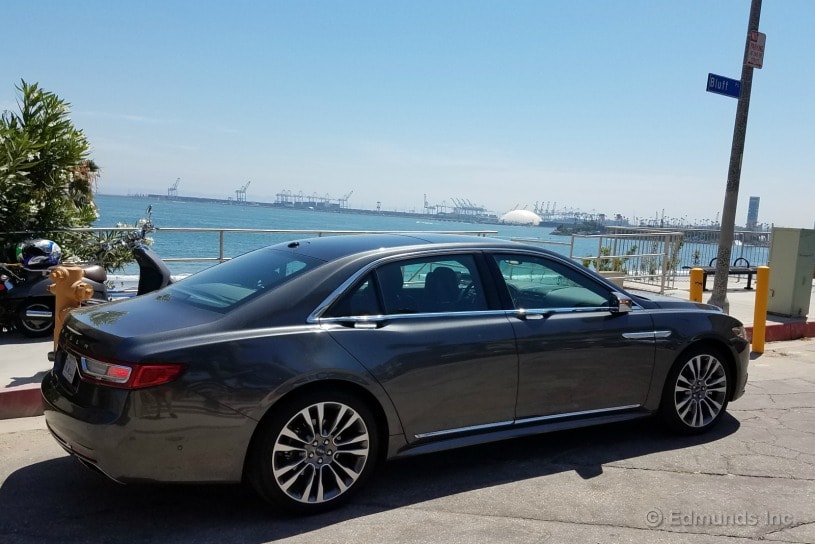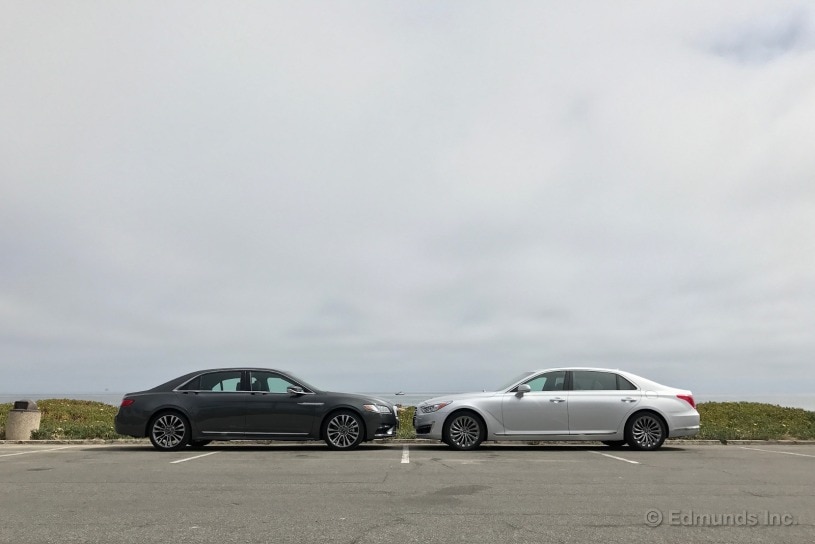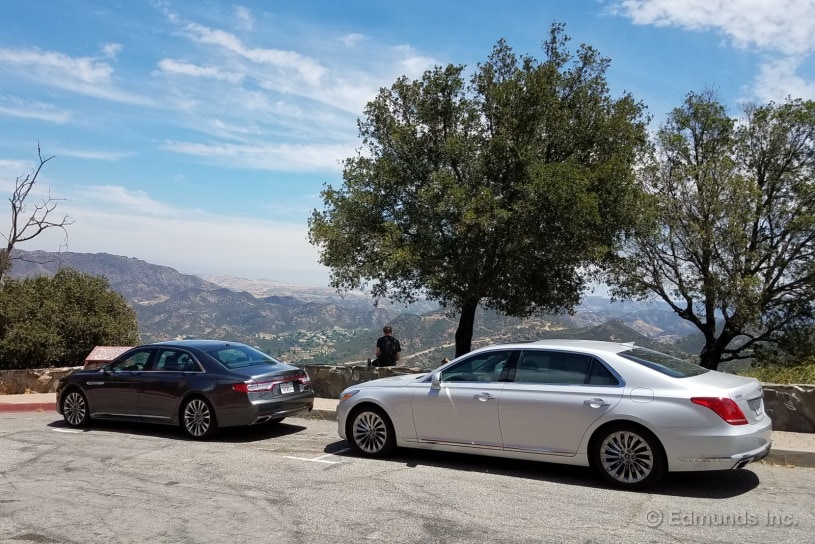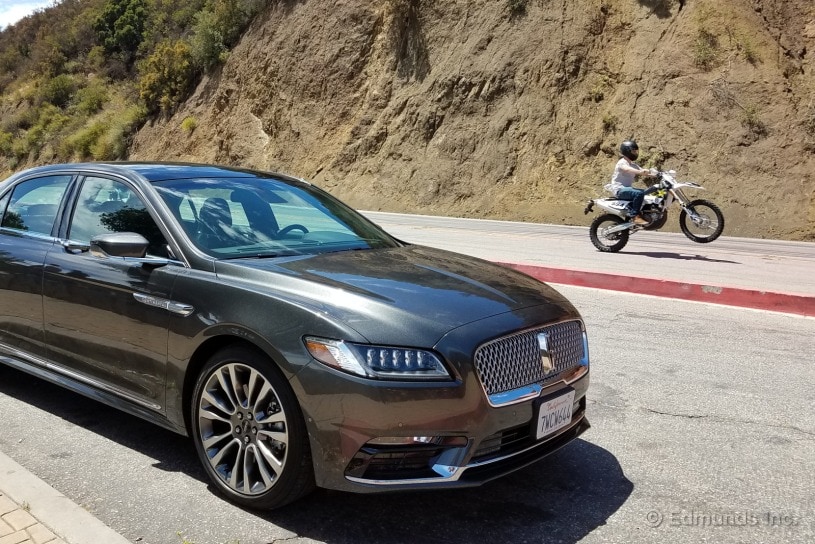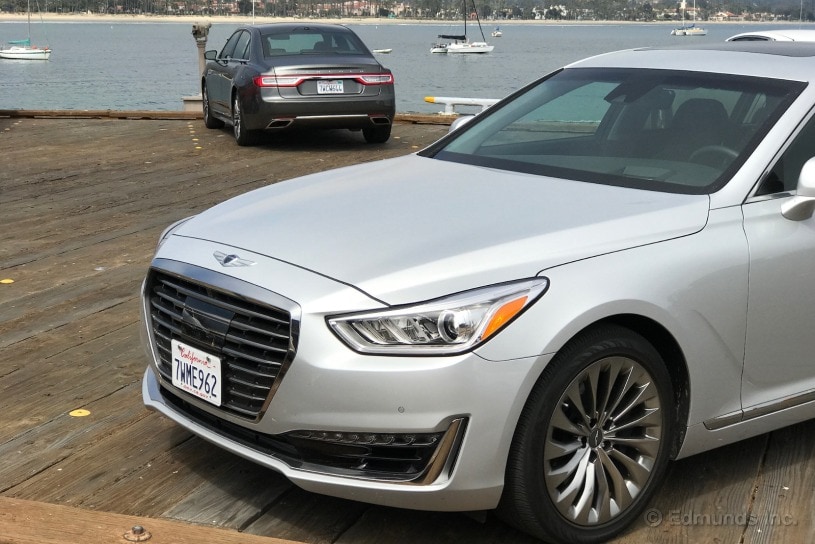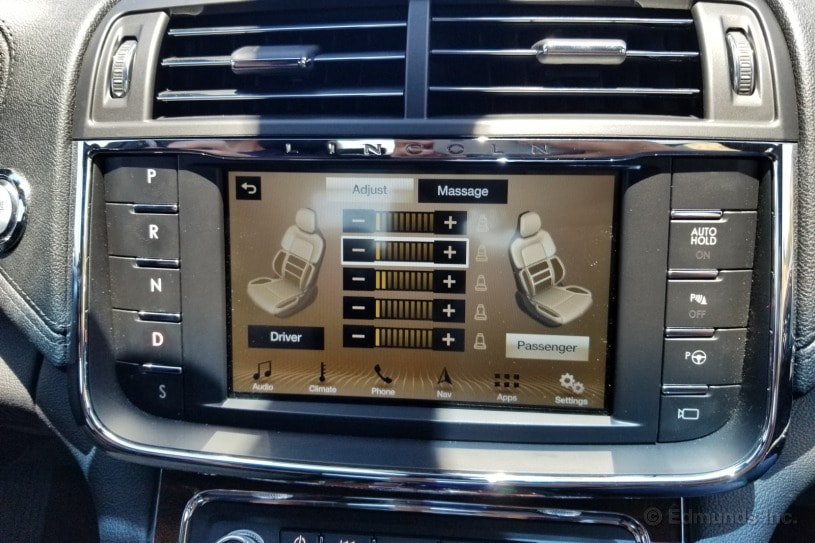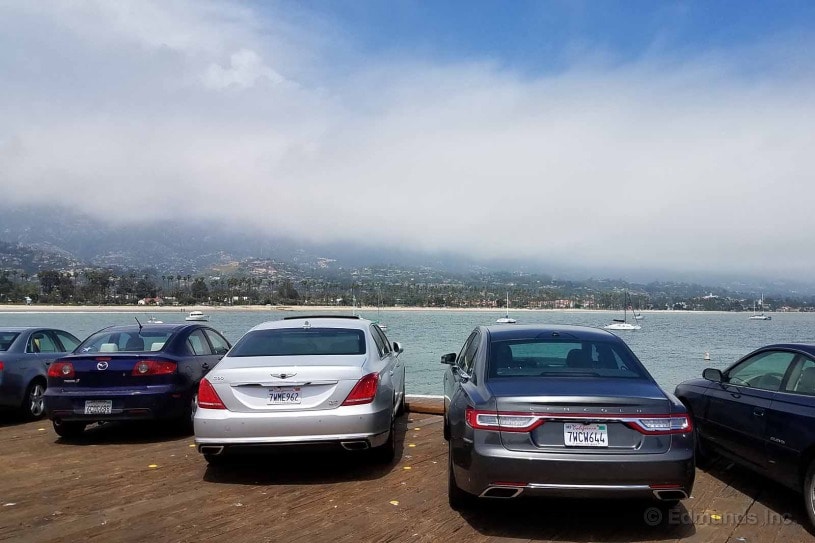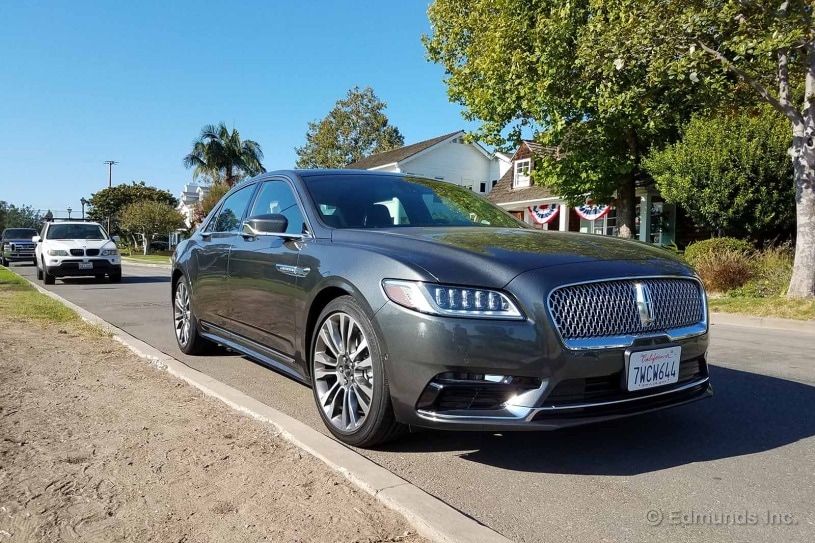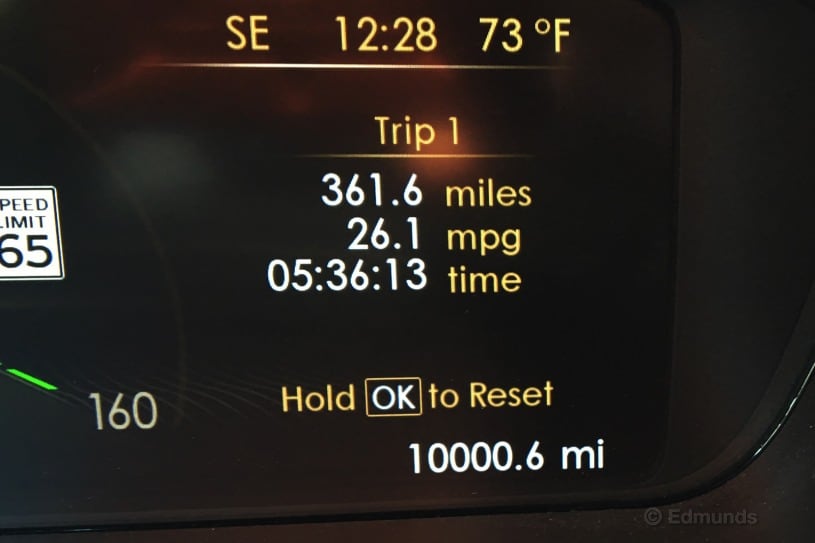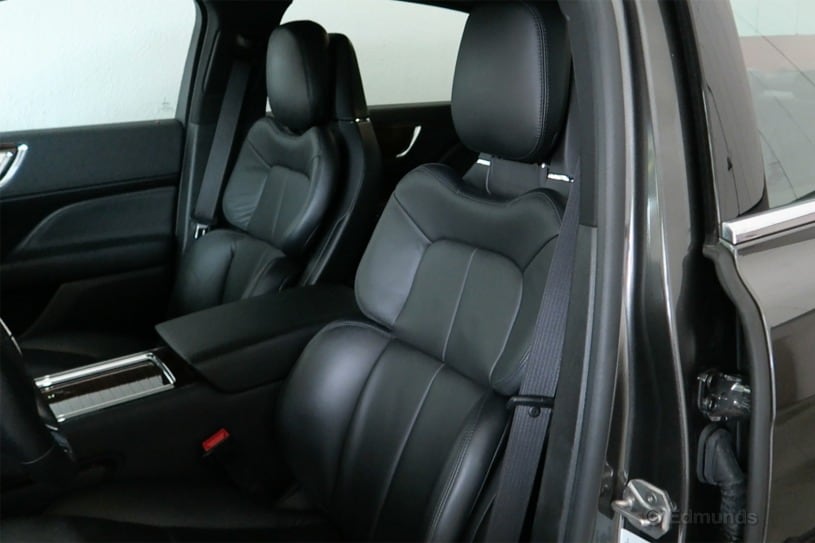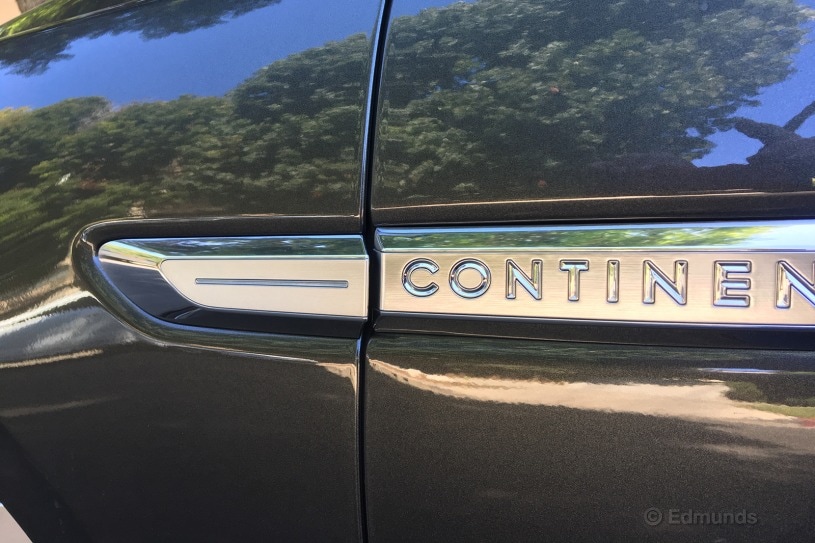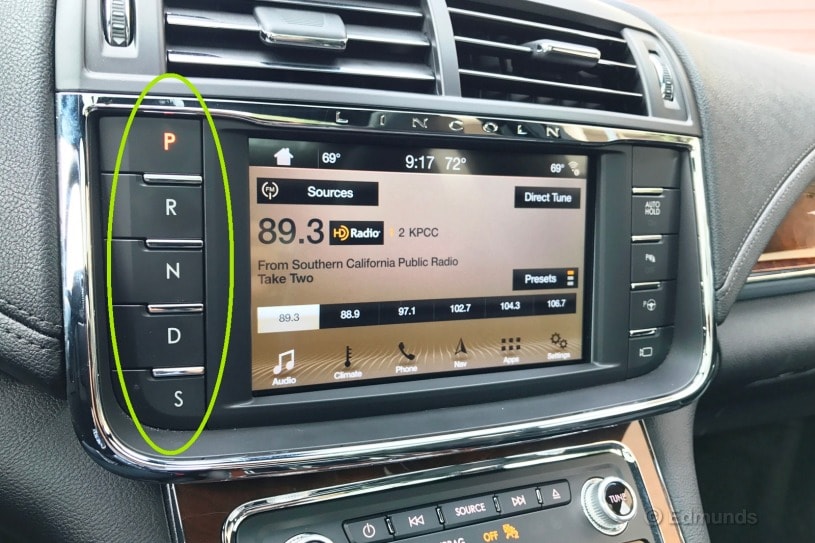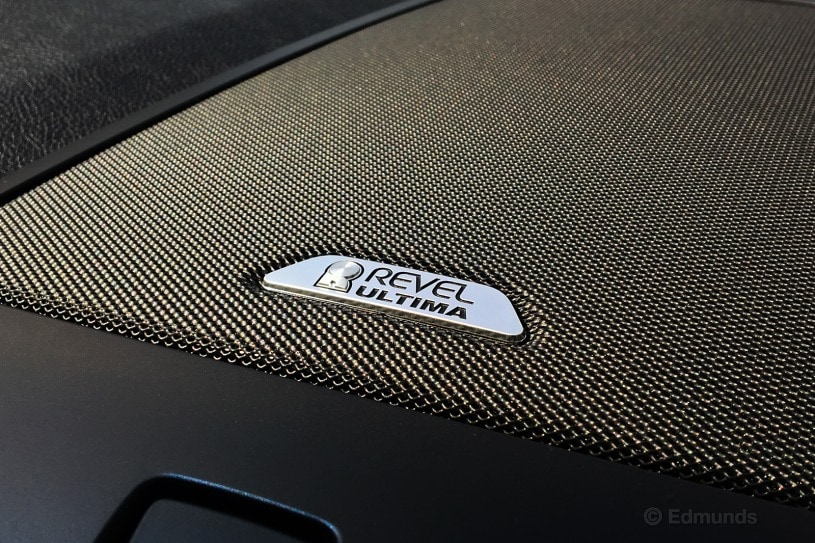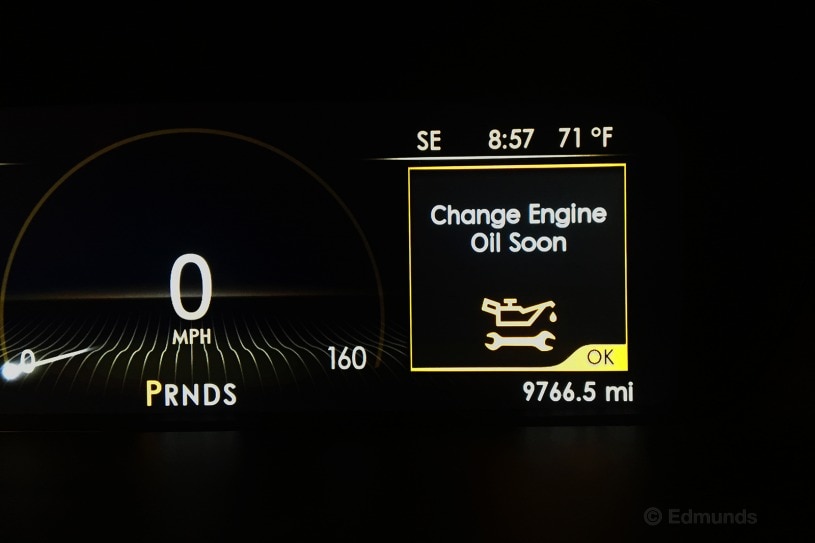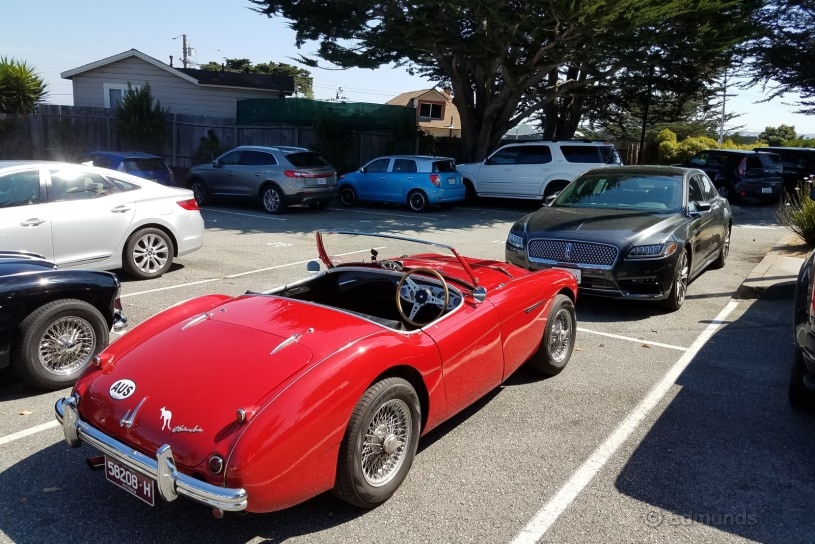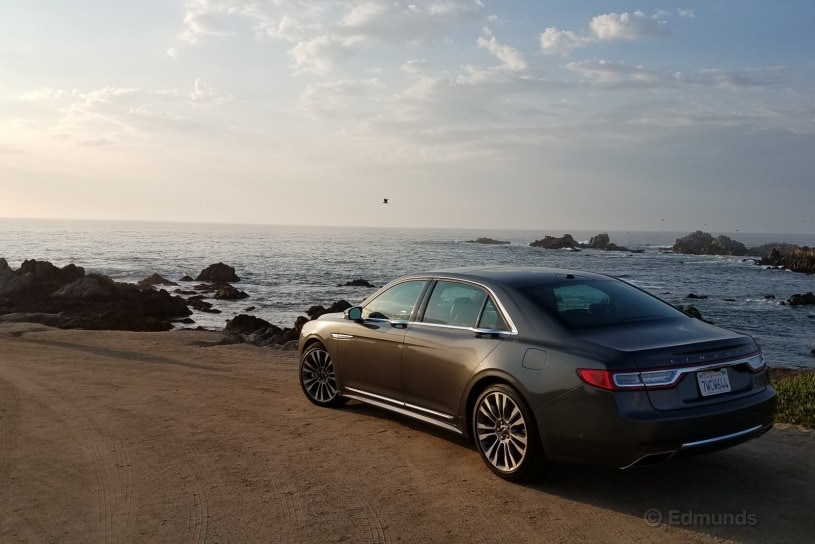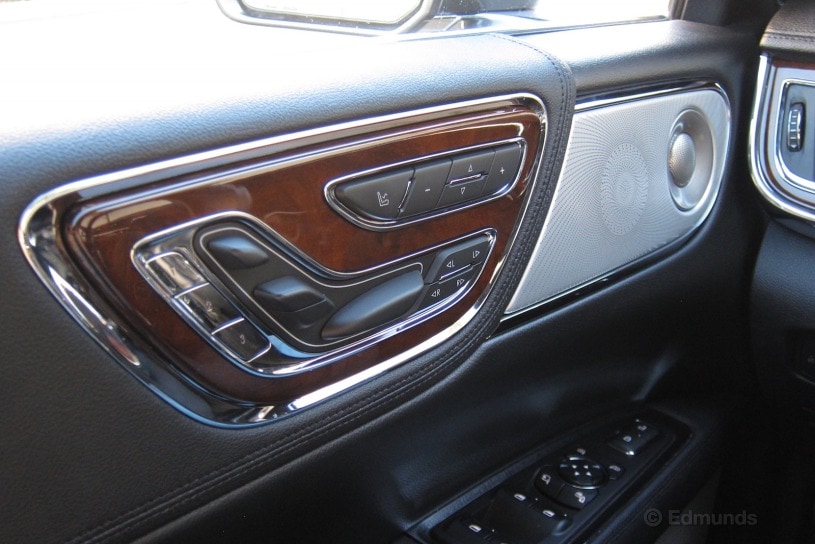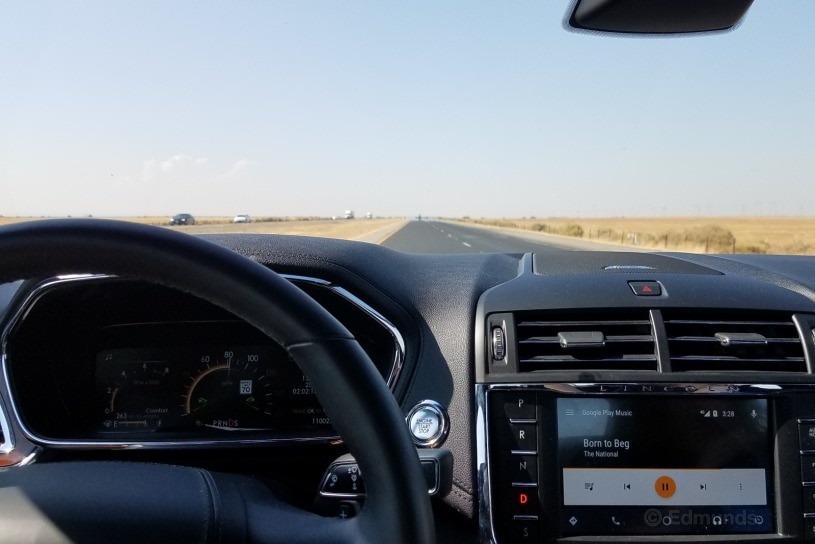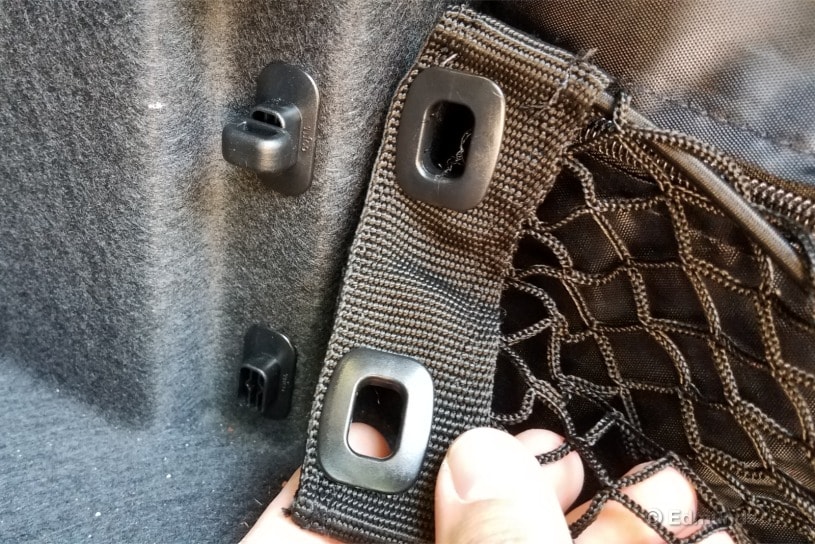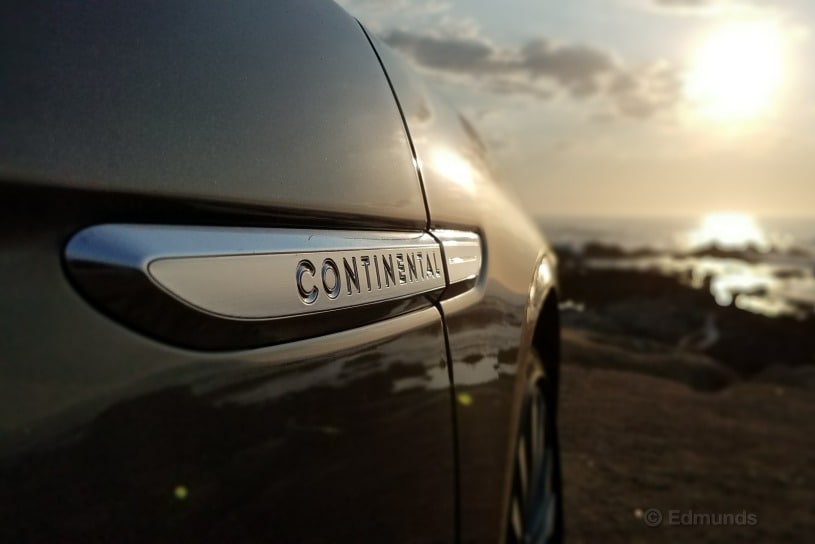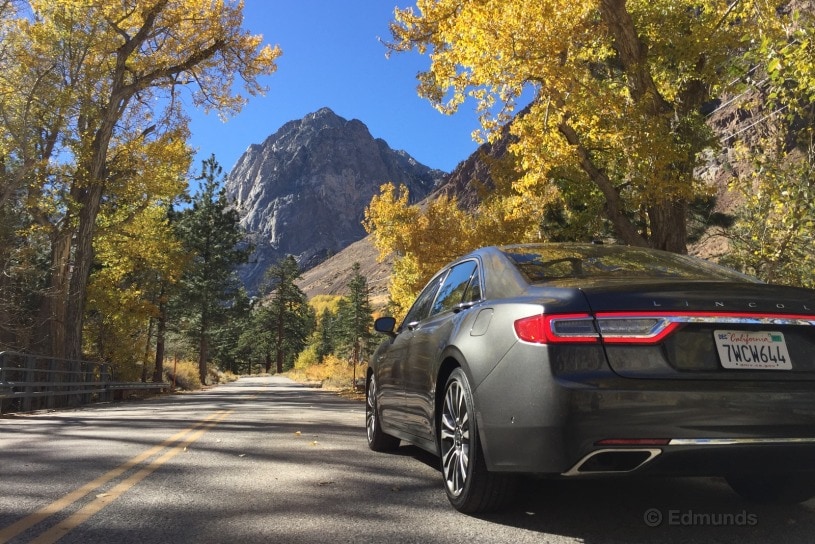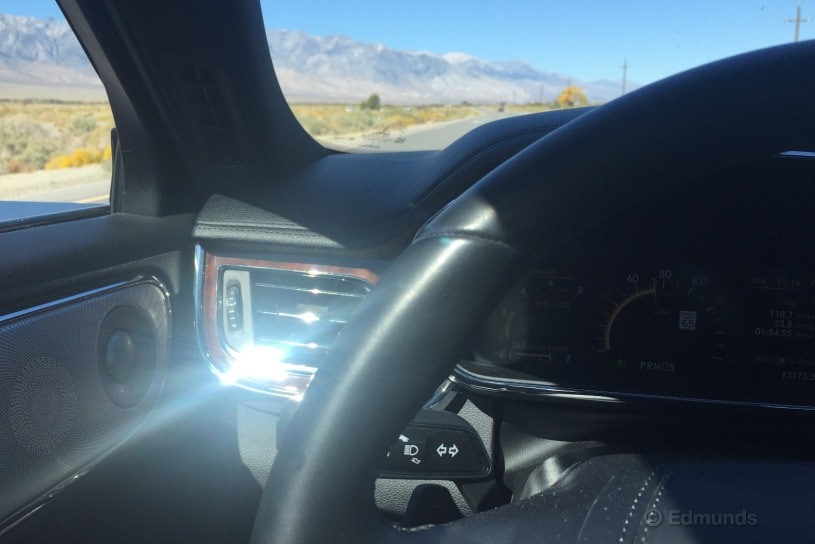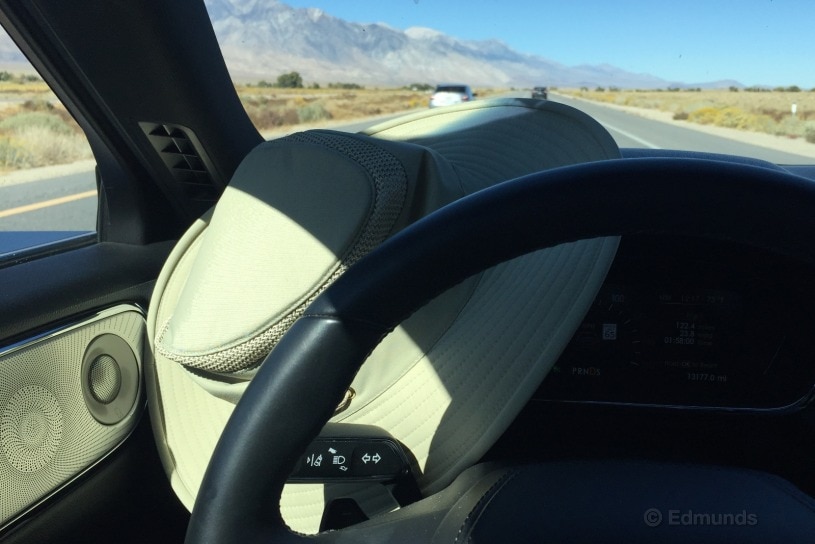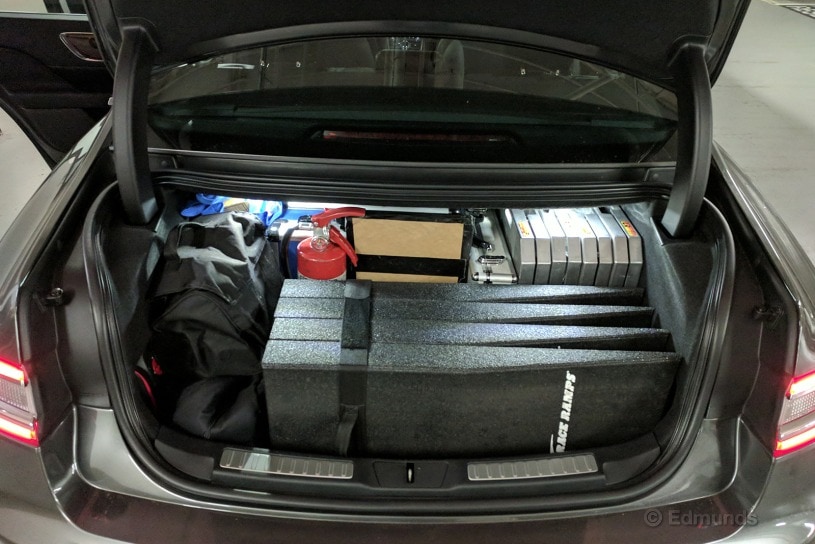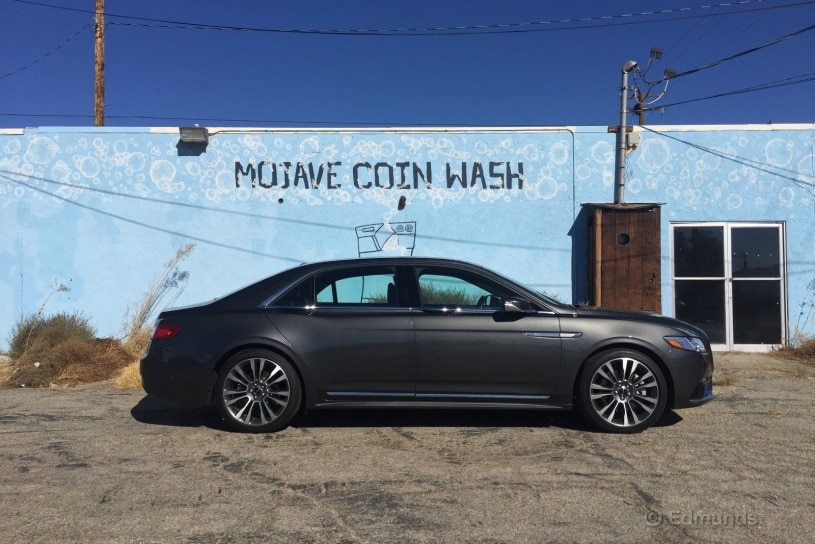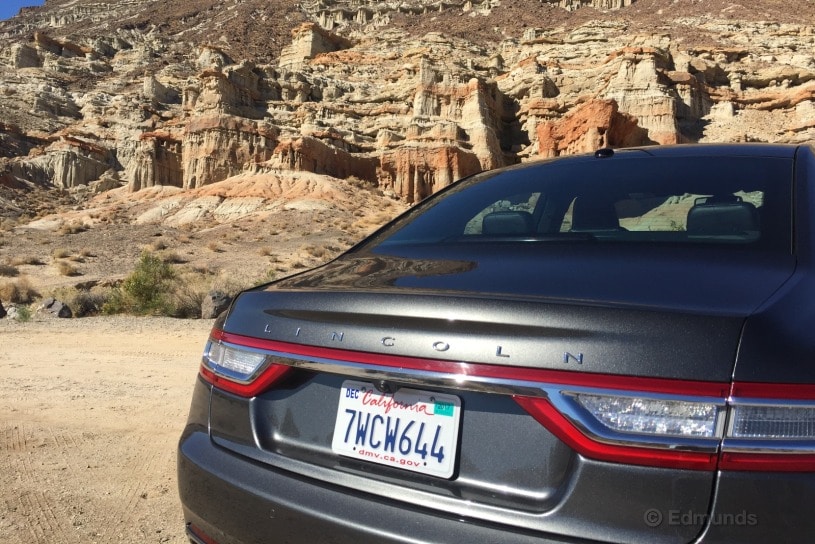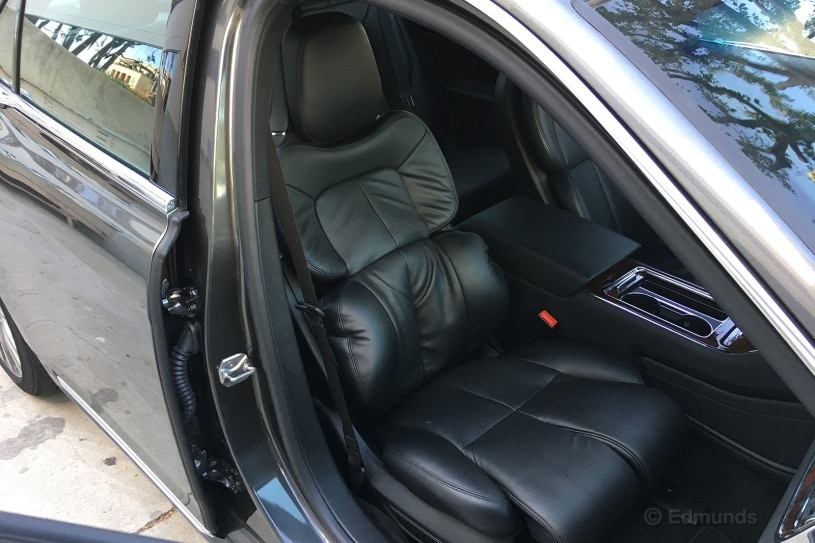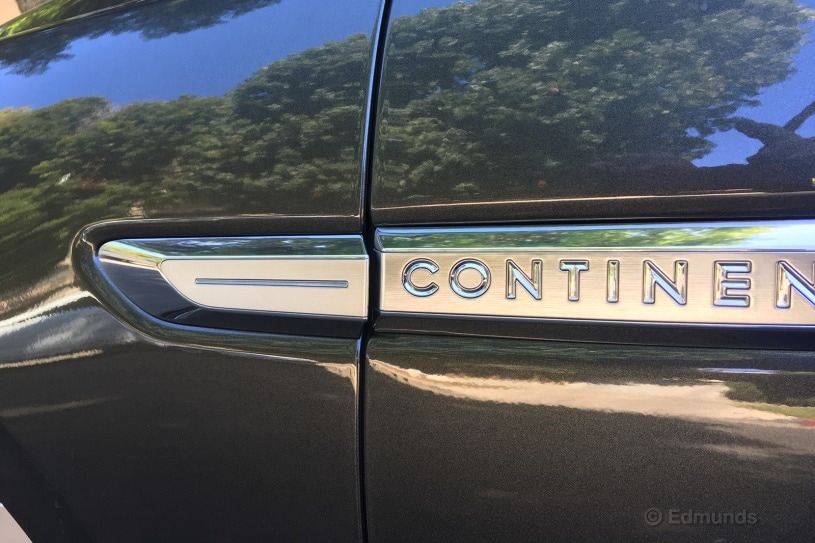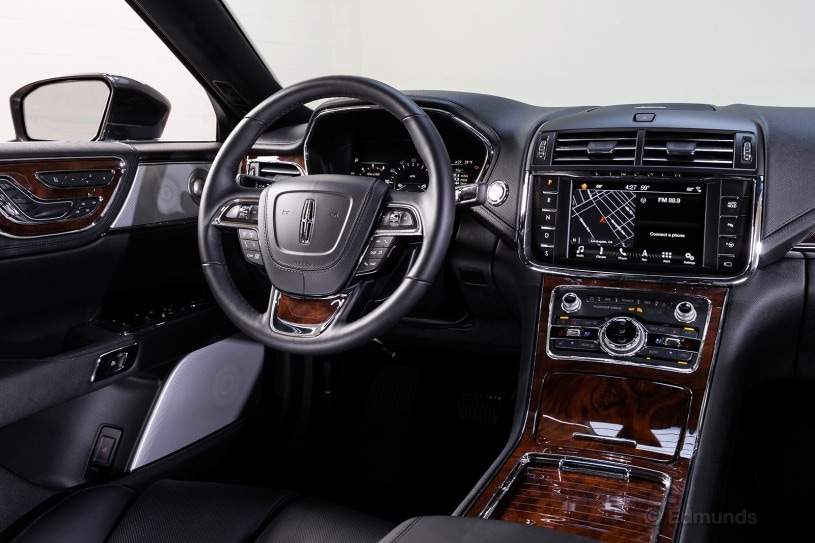2017 Lincoln Continental: What's It Like to Live With?
Read the latest updates in our long-term road test of the 2017 Lincoln Continental as our editors live with this sedan for a year.
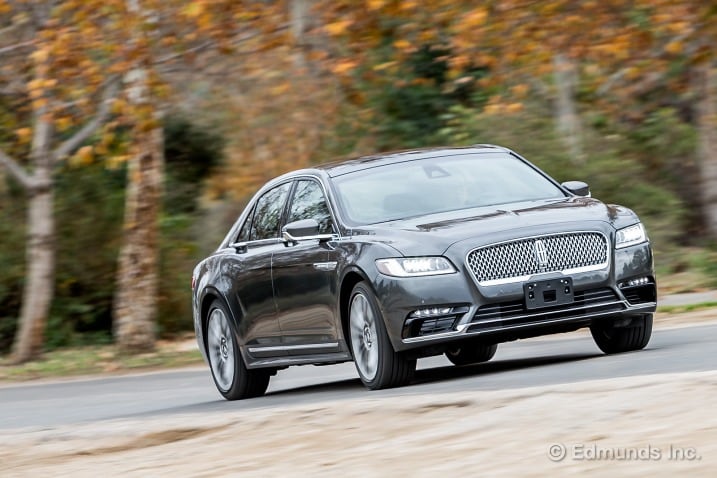
What do you want to know about?
- Introduction
- Monthly Update for January 2017
- Monthly Update for February 2017
- Performance Tested
- Monthly Update for March 2017
- Monthly Update for April 2017
- Monthly Update for May 2017
- Monthly Update for June 2017
- Comparing Our Big Luxury Cars
- Monthly Update for July 2017
- Monthly Update for August 2017
- Monthly Update for September 2017
- Monthly Update for October 2017
- Monthly Update for November 2017
- Wrap-Up
Introduction
What Did We Buy?
Over the last couple of decades, many of Lincoln's products have been modestly upgraded Fords. Sure, the Lincolns had different names and a few unique features, but even the most casual shopper could tell that a Navigator was just a fancy Expedition or the MKZ was a Ford Fusion in different clothes.
The new 2017 Lincoln Continental doesn't follow that formula. It not only revives a classic name, it gets Lincoln back into the game of making its own unique cars again.
More importantly, the Continental is the kind of car that Lincoln built its reputation on. It's a big, powerful sedan, but it's not trying to be a better BMW. The ride is forgiving, the cabin is quiet, and there's plenty of passenger room in every direction. It has plenty of modern technology, too, all of which we intend to test over the next 12 months.
What Options Does It Have?
When it comes to the new Lincoln Continental, there's a broad price gap between the base model and the top-of-the-line Black Label versions. We wanted to get a well-equipped model so we stepped up to the Reserve trim, which sits just below the top-shelf Black Label models.
We also wanted to test the new 3.0-liter twin-turbo V6 engine that's exclusive to Lincoln. It requires a switch from front- to all-wheel drive, a change that makes sense given that the new engine develops 400 horsepower and 400 pound-feet of torque. It's hard to send that much power through the front wheels without affecting the steering feel.
From there we added the Luxury package, which is mainly a stereo and headlight upgrade, along with the Technology package that bundles together various safety features such as a 360-degree camera, pedestrian detection and lane departure warning.
The new "perfect position" seats, which adjust in 30 directions, are a stand-alone option as is a twin-panel moonroof. Our car had both, along with the Climate package that adds heaters for the seats, a heated steering wheel, auto high beams and rain sensing wipers. Finally, we insisted on the optional 20-inch wheels. Why? The standard wheels on the Reserve trim make it look like a rental car. We couldn't imagine staring at them for a year.
All in, our car had a sticker price of $72,905. After a little back and forth with Santa Monica Lincoln, we settled on a price of $70,432.
Why We Bought It
This is Lincoln's best chance to convince luxury shoppers that it deserves a place alongside not only Cadillac, but Audi, BMW and Mercedes-Benz. It has all the right pieces, but it needs to prove that they are put together in a way that makes it feel special. And given its sticker price, it should feel special.
Over the next 12 months, we'll get a very clear picture how far Lincoln has come. Is this Continental merely a really nice Ford? Or is it the kind of car that will make you second-guess the need for a European badge on your next luxury car? Follow along on our long-term road test page to get the latest updates and impressions of this all-American luxury sedan.
Edmunds purchased this vehicle for the purpose of evaluation.
Monthly Update for January 2017
Where Did We Drive It?
Our 2017 Lincoln Continental joined the long-term test fleet in January and quickly proved itself to be a comfortable cruiser. Despite arriving in the middle of the month, the Continental has already covered more than 2,000 miles.
The Lincoln spent some time in the city with Edmunds CEO Avi Steinlauf, while Content Strategist Josh Sadlier drove it to Palm Springs and deemed it "one of the quietest highway cars in recent memory." Additionally, the Continental got the star treatment from photographer Kurt Niebuhr, who shot the Long-Term Introduction on location in the San Fernando Valley.
What Kind of Fuel Economy Did It Get?
We filled our Lincoln Continental a total of six times this month and failed to hit the EPA combined number (let alone the highway number) for any of those tanks. Here's how the car is doing so far.
Average lifetime mpg: 16.3
EPA mpg rating: 19 combined (16 city/24 highway)
Best fill mpg: 17.9
Best range: 283 miles
Current odometer: 2,362 miles
Maintenance and Upkeep
None.
Logbook Highlights
Performance
"The steering feedback/feel effectiveness in this car is bizarre. It's like I programmed it. Not because it matches what I like, but because it feels like it was done by someone with no practical experience tuning electric power steering systems. There are different feedback and resistance levels throughout almost every input, and the actual amount it turns the wheels seems to change, too. Couple this with the fact that the Continental's power steering snaps the wheel back to center as soon as you let up any grip on the wheel and you've got a recipe for a car that needs constant steering attention." — Mike Magrath, Content Strategist
"I was mildly bummed that the Continental projected a mere 321 miles of range when I filled up in the desert. I'd been on the highway all day, so if the prediction was based on recent driving style, it was close to a best-case scenario. Looking at our first few tanks — including my highway efforts — we haven't even come close to cracking 300 miles between fills. Am I crazy to expect a car called the Continental to give me some serious long-distance capability? This seems to be a general philosophy at Ford; I noticed the same shortcoming in our old 2015 Mustang GT and current 2017 Escape. Not that you'd normally drive 400-plus miles in one stretch, but especially in a car like this, it's nice to know you could." — Josh Sadlier, Content Strategist
Technology-Audio
"Strange that Lincoln would choose to put the electronic parking brake switch way down to the left of the driver's knee, where you'd expect to find an old-school pull handle. The switch is small and hard to find, and it also has an awkward rocker-style operation that increases the degree of difficulty. It's just a switch, guys — you don't have to put it down there, do you? How about putting it somewhere on the center console instead?" — Josh Sadlier, Content Strategist
Comfort
"I doubt I'll be the only one to say this, but the optional 30-way seats in this Lincoln are some of the best seats I've ever experienced in any car. It takes a little time to dial them in just right, but it's well worth the effort. I've had more than a few multi-hour drives and come away very impressed. The door-mounted adjustment buttons are the only weak point as they have some very awkward angles that make them less intuitive than they should be, but the more detailed adjustments that you make through the touchscreen interface work much better. I wouldn't buy a Continental without this option." — Ed Hellwig, Executive Editor
Miscellaneous
"First impression from 10 feet away: The silver trim piece on the driver front fender is supposed to flow into the silver 'Continental' insert on the driver door, and something's a little off. On a closer inspection, the latter turns out to be about an eighth of an inch higher, give or take (the red lines in the photo show where the fender piece would need to be to match up). Nitpicking? Sure. But that's what a $70,000 car invites. If I saw something like this on a used car, I might wonder if it had been hit there and imperfectly repaired. I think it's fair to expect more precision at this price point." — Josh Sadlier, Content Strategist
Monthly Update for February 2017
Where Did We Drive It?
We pick up where we left off last month. Edmunds CEO Avi Steinlauf had our new-ish 2017 Lincoln Continental for the first part of February, using it primarily for commuting to and from the Edmunds mothership. After that the Lincoln returned to its normal duties, spending an extended weekend in the hands of Josh Sadlier and then heading north with Brent Romans, our man in Fresno.
If you recall last month's update, we were unimpressed by the Continental's fuel economy results. February didn't see much improvement, but there's still time.
What Kind of Fuel Economy Did It Get?
There were only three fill-ups in February over 621.3 miles logged. We poured in 44.4 gallons of 91 octane, which comes out to about 14 mpg. That drops our lifetime average by nearly 1 mpg, but there was one bright spot. Brent managed to score the best recorded result from a tank with 20.3 mpg, though there have been only nine fuel log entries so far.
Average lifetime mpg: 15.4
EPA mpg rating: 19 combined (16 city/24 highway)
Best fill mpg: 20.3
Best range: 283 miles
Current odometer: 3,216 miles
Maintenance and Upkeep
None.
Logbook Highlights
Performance
"No complaints about the twin-turbo V6, aside perhaps from its thirst. This thing is the business in the midrange — a kickdown to about 3,500 rpm at 40 mph sends you rocketing forward. I also like how the softly sprung Continental rocks back on its haunches when you boot it. Appropriately old-school." — Josh Sadlier, Senior Manager, Content Strategy
"The 2017 Continental has a six-speed automatic transmission. A bit behind the times, don't you think? Sure, as six-speeds go, it's fine. It upshifts smoothly and doesn't rush to get to top gear in an attempt to eke out the best fuel economy. But compared to the latest eight-speed autos used in most rival sedans, it comes up short. It lacks the rapid-shift action those transmissions have when you're fully on the gas, and its manual-mode shifting is slower, too. Oh, and our car's fuel economy so far has been disappointing. Ford's putting a new 10-speed auto in the 2017 F-150 with the turbocharged 3.5-liter V6. Seems odd not to have it here, too." — Brent Romans, Senior Automotive Editor
Technology-Audio
"Look at that, a tuning knob! In a brand-new car! You mean I don't have to tap a virtual button endlessly to move through the channels, or rub a haptic strip just the right way? What a concept. Thank you, Lincoln, for realizing that retro can also mean progress." — Josh Sadlier
Miscellaneous
"As much as I like the overall look of the Continental, I wish the front end were a little more differentiated from the MKZ's. Looking at them head on, they're almost indistinguishable. I get that Lincoln is going for a family resemblance, but the Continental is the flagship of the lineup. It should have a little something extra to make sure people know it. There are some small differences, but not enough to tell at a glance." — Ed Hellwig, Executive Editor
"Here's one appealing aspect of our Lincoln Continental: It doesn't remind me of a Ford product. For many years now, any Lincoln I drove seemed too similar to whatever Ford product it was based on. MKZ? Oh, it's just a gussied-up Fusion. MKX? Gussied-up Ford Edge. But the Continental? There's no obvious counterpart. The company did a nice job of making the sedan's styling and interior design distinct. Plus, the Continental departs from Lincoln's alphanumeric naming logic. That alone is a win." — Brent Romans
"The Continental's doors qualify as luxury-grade. Press the button on the inside of the exterior handle and the door smoothly pops out just a bit. After that, the action of opening the door feels more like you're swinging it open rather than yanking it open. The doors have a suitably solid feel to them, too. (I do wonder if Lincoln went a little overboard on that, though — will the doors be too heavy for some people?) Upon closing, our Lincoln has the power soft-close feature, which is another nice touch." — Brent Romans
Performance Tested
Our new long-term 2017 Lincoln Continental had some interesting potential at the test track. Not only was it an all-new car from top to bottom, ours has the top-of-the-line, twin-turbocharged 3.0-liter V6. With 400 horsepower on tap, the Lincoln-exclusive engine has enough power to make even a large luxury sedan quick on its feet.
So where did the Continental excel and where did it fall flat? Check out the numbers to find out.
Vehicle: 2017 Lincoln Continental Reserve AWD
Odometer: 2,181
Date: January 17, 2017
Driver: Kurt Niebuhr
Price: $72,905
Specifications:
Drive type: all-wheel drive (AWD)
Transmission type: automatic
Engine type: twin-turbocharged conventional gasoline V6
Displacement: 3,000 cc/183 cu-in
Redline: 6,000 rpm
Horsepower: 400 hp @ 5,750 rpm
Torque: 400 lb-ft @ 2,750 rpm
Brake type (front): one-piece ventilated rotors with two-piston sliding calipers
Brake type (rear): one-piece solid rotors with single-piston sliding calipers
Suspension type (front): MacPherson strut dampers with aluminum control arm and stabilizer bar; continuously controlled damping (CCD)
Suspension type (rear): advanced integral-link suspension with coil springs, gas-pressurized dampers and stabilizer bar; continuously controlled damping (CCD)
Tire size (front): 245/40R20 99W
Tire size (rear): 245/40R20 99W
Tire brand: Goodyear
Tire model: Eagle
Tire type: regular
Test results:
Acceleration:
0-30 mph: 1.9 seconds (with TC on: 2.2 seconds )
0-45 mph: 3.4 seconds (with TC on: 3.7 seconds )
0-60 mph: 5.5 seconds (with TC on: 5.8 seconds )
0-60 mph with 1-ft rollout: 5.2 seconds (with TC on: 5.4 seconds )
0-75 mph: 7.8 seconds (with TC on: 8.2 seconds )
1/4-mile: 13.66 seconds @ 101.60 mph (with TC on: 13.88 seconds @ 100.98 mph)
Braking:
30-0 mph: 28 feet
60-0 mph: 111 feet
Handling:
Skidpad lateral acceleration: 0.84g (0.78g w/ ESC on)
RPM @ 70 mph: 2,100
Acceleration comments:
Quite the punch off the line. The first three gears are well-stacked and the Continental gets through them quickly, even with some not-insignificant tugging at the wheel. While I wouldn't call them slow, the shifts feel strange, almost slurred like an old-school automatic. It's not a bad thing, as there's definitely no shift shock (befitting a luxury car); it's just different from the usual, crisp upshifting you find in most of its rivals. This car is definitely not slow, and up to about 80 mph, the Continental just trucks. This motor is very healthy, even if it sounds uninteresting. The indicated redline is meaningless — the car will shift at 6,000 rpm come hell, high water or manual selection. The quickest run was in Sport mode with traction control turned off and a quick brake torquing up to around 2,000 rpm.
Braking comments:
While there's a lot to like about the firm pedal and the ease at which you can modulate the braking pressure, there's not a lot to like about the unmuted and crunchy sounds coming from the ABS. That's not fitting for a luxury car, or any car at this price. That said, the body control is commendable. Every stop ended with a slight drift to the right, which you might be able to chalk up to the pavement, but no other car tested that day exhibited that same tendency. Whatever the reason is for that, the distances were very consistent and stability was also very good. These brakes definitely have a lot of power.
Handling comments:
Surprisingly quick and direct steering for a Lincoln, or anything without sporting intentions. And though the steering is fairly accurate, the massive amount of torque available at the front wheels makes it difficult to hold the Continental on the line at the limit. The slightest increase in throttle creates significant understeer. But much like the Fusion, the chassis is solid. Comfort mode maintains good control of the body, but leaving the stability control on keeps the limits low. Stability control can never be fully dismissed, but turning it off does give you a little more room to work with. The tires barely talk back, so finding the limit takes a bit of trust. Changes direction quickly enough to spill your drink which is again, surprising.
Monthly Update for March 2017
Where Did We Drive It?
Our 2017 Lincoln Continental traversed 1,373 miles last month. Its role as a comfy commuter accentuated its more graceful qualities. Yet under the same conditions we also uncovered some of its daily-driver shortcomings.
Senior Editor Brent Romans had our Continental over two weeks, longer than any other driver this month. This gave him plenty to say about the Lincoln, including some frustration with its door locking technology. Senior Road Test Editor Jonathan Elfalan and Senior Editor Ed Hellwig both exposed the smooth-shifting automatic transmission as well as its alter ego, the confused, hard-upshifter. And Associate Editor Cameron Rogers had commentary about our Continental's 30-way power seats, for better and for worse.
Read on for more.
What Kind of Fuel Economy Did It Get?
Our Continental continues to fall short of the EPA combined mpg rating. Mostly, that's because of heavy right feet and all of that power. Maximum driving range still isn't very good, either. But we did see our best fill (almost 24 mpg) in March. So maybe there's hope for the future.
Average lifetime mpg: 16.3
EPA mpg rating: 19 combined (16 city/24 highway)
Best fill mpg: 23.8
Best range: 301 miles
Current odometer: 4,560.5 miles
Maintenance and Upkeep
None
Logbook Highlights
Performance
"The optional turbocharged 3.0-liter V6 in our Continental is stout. Mat the gas and the Conti surges ahead with authority. The specs say we've got 400 horsepower and 400 pound-feet of torque to play with. But I'd expect a bit more verve for something with 400 hp. Our performance testing backs that feeling up some: we measured a 0-60-mph time of 5.5 seconds. Our Continental is certainly quick, but the last Audi A6 we tested, with 333 hp, did it in just 5.3 seconds." — Brent Romans, Senior Editor
"The Continental's engine is laudable, but the automatic transmission seems to get tripped up on occasion when lifting off the accelerator. This leads to a hard and abrupt gear change (I think between 2nd and 3rd) which feels similar to the problematic nine-speed ZF automatic gearbox in our old Honda Pilot. It doesn't happen all the time, but it certainly seems like a something that will cause mechanical issues down the road." — Jonathan Elfalan, Senior Road Test Editor
"Overall, I think the engine-transmission combo in the Continental works great. It's a surprisingly quick sedan when you lay into it and the shifts are crisp and well timed. Under part throttle, the shifts are almost imperceptible .... It's not perfect, though. While inching through traffic I noticed that the transmission will deliver a clunky 1-2 (or maybe it's 2-3) upshift if you ease off the throttle just before it grabs the next gear. It doesn't happen every time, but it's no fluke either. It's the only flaw in the system I've experienced so far. Not quite a deal breaker, but not exactly what you would expect from a $70K luxury sedan either." — Ed Hellwig, Senior Editor
Audio & Technology
"Our Continental's exterior touch-sensitive door lock feature doesn't work all that great. After exiting the vehicle, you're supposed to touch the icon to lock the doors. But about half the time it doesn't register my finger press/swipe, so I have to try again. You have to be quick, too — after a few seconds, the lock indicator light turns off completely. I'm still playing around with it. Maybe it's operator error. But so far it seems to me a physical lock button would work a lot better." — Brent Romans
Comfort & Interior
"The Continental's been in our fleet since December, but last night was the first time I'd had the chance to take it home. First impressions are everything, they say, and my first impression was one of great confusion. How could I not get comfortable in seats that adjust a mind-bending 30 ways?
"It's all about the shoulders. There are two back adjustments with the optional "Perfect Position" seats. One controls the backrest angle and one pushes the split upper cushion in and out via an accordion-style mechanism. Unlike the headrest, which is also power-adjustable fore and aft, the upper backrest doesn't lock in place. This is infuriating in everyday driving situations. Even when I'm not tapping into the Continental's robust well of power, my upper body constantly shifts in small motions unless I put the cushion into its rearmost position. And that's what I'll have to do from now on.
"The only other vehicles I can recall that also offer these adjustments are high-end BMWs. The BMW seats are better as the upholstery isn't split into distinct cushions as on the Continental. Whatever mechanisms control the BMW's shoulder angle are sturdy and don't shift under body pressure. You always feel secure." — Cameron Rogers, Associate Editor
"Can someone explain to me the benefit of having individually adjustable thigh-length cushions? What percentage of the population requested this feature because of their uneven leg lengths?" — Jonathan Elfalan
"You'd expect the Continental to have a roomy and comfortable backseat, and it delivers. The outboard seats have supportive cushioning and lateral support. There's an abundance of legroom and shoulder room to stretch out, and thigh support is appropriate for adults. Rear headroom isn't quite as generous — it should be fine for people under 6 feet tall, but anybody over that might be brushing his or her head on the headliner. In general, though, I like the seating. I'd be comfortable riding in the back of our Continental on a long trip." — Brent Romans
Monthly Update for April 2017
Where Did We Drive It?
It was a pretty quiet month for a 2017 Lincoln Continental. We only managed to tack on another 500 miles before taking it to the dealer to address a few issues.
Most of the comments from those who did drive the big sedan this month were generally positive. The performance, in particular, was called out by several drivers who were surprised by how quickly the Continental can get up to highway speeds. Commuting was the name of the game for most of the month, so it's likely that most drivers forgot what the Continental was like at speeds over 20 mph.
What Kind of Fuel Economy Did It Get?
This month the fuel numbers were pretty average. We didn't make any headway on getting the overall number up, and it didn't break any range records either. It's a continuing struggle to achieve the combined mileage rating, although that's what happens when you have 400 horsepower at your disposal.
Average lifetime mpg: 16.1
EPA mpg rating: 19 combined (16 city/24 highway)
Best fill mpg: 23.8
Best range: 301 miles
Current odometer: 5,083 miles
Maintenance and Upkeep
This month we dropped the Lincoln off at the dealer to address a few issues. First, there was the 5,000-mile service, which didn't consist of much and was a relatively straightforward checkup. Next up was an airbag recall (NHTSA 17V123) or Complaint Notice 17C02. According to NHTSA, there's a possibility that the airbag wouldn't inflate completely in the event of an accident, so it will be replaced. Finally, we ran into a bit of a seat issue. While attempting to remedy a massage button that wouldn't activate, the passenger seat in our Continental became stuck. And when we say stuck, we mean nearly all of the seatback bladders were inflated. We'll be curious to see what caused it, and hopefully it won't be a problem going forward.
Logbook Highlights
Performance
"I really like this twin-turbo 3.0-liter V6. It feels underworked and happy to flex at the slightest provocation. Rolling into the gas pedal returns a smooth but powerful surge forward that's amplified by the car's body rolling slightly back on its soft suspension. The ample power means the car never feels overworked or challenged, a crucial sensation for a large and powerful luxury sedan. Even better, it gives you command of your place in traffic. You can surprise almost anything on a freeway on-ramp merge — no one expects a Lincoln Continental to rocket away. And then it does. Though you experience the good parts of acceleration (the surge and the sound), undesirable vibrations and noises are harder to detect. Lincoln did a great job isolating the engine from the cabin." — Carlos Lago, senior writer
"As for the drive, the 400-hp twin-turbo engine is beautiful. It's incredibly smooth, quiet, and the power that comes out of the car is very linear. Interestingly enough, while you know the engine is a beast when you stomp your foot into the pedal, even in Sport mode, you don't get a sensation that the car is fast. Don't get me wrong, the car doesn't feel slow either, but when I found our car does zero to 60 in 5.5 seconds I was surprised. It might be because the car is so big and the engine is so well behaved even when being pushed hard, but I didn't get the sensation that the car is throwing you back as you see the speedometer race up in speed." — Edmunds staffer
Miscellaneous
"A strange thing happened during my first time driving the Continental: I could see the exterior door handles from the driver's seat. I can't think of any other car that does the same. Placing the door handles in chrome trim on the beltline (where the windows and the doors meet) gives the Continental a unique look. I like it; catching a glimpse of chrome (a material I'm normally opposed to) added a stateliness to a decidedly nonglamorous rush-hour drive home." — Carlos Lago
"So the car will go into the shop this week and hopefully the airbags will get deflated and the seats will be fixed. On a side note, when I called about taking the car in, I did ask if Lincoln would provide a complimentary loaner. The answer was yes, but interestingly the first question from the service person was whether this was a car used for a car service, because if it was they would not be able to provide a loaner car. Obviously this was an innocent question from the service person, but I couldn't help but think that if I paid $70K-plus for this car and was asked this question, it would make me wonder if buying a 'fleet' car was the right choice." — Edmunds staffer
Monthly Update for May 2017
Where Did We Drive It?
It wasn't a month full of road trips or long journeys for our long-term 2017 Lincoln Continental. There were several necessary repairs and a dealer service, so it sat quite a bit. We did, however, drive it around town and get to know it better than we had the previous months. No doubt, we'll start stretching this big sedan's legs pretty soon.
What Kind of Fuel Economy Did It Get?
With only two fill-ups during May, we had a monthly fuel economy average of just 16.3 mpg. That's just above the Continental's EPA city estimate of 16 mpg. The lifetime fuel economy average stayed the same.
Average lifetime mpg: 16.1
EPA mpg rating: 19 combined (16 city/24 highway)
Best fill mpg: 23.8
Best range: 301 miles
Current odometer: 5,577 miles
Maintenance and Upkeep
This month, we took our Continental to the dealer with four items on the list: an airbag recall, the first 5,000-mile service, a hanging wire below the driver footwell and overinflated sections of the passenger seat. All these items were addressed and covered under warranty. Total time at the dealer: 26 days.
Logbook Highlights
Performance
"Boy, am I glad we opted for the 3.0-liter twin-turbo V6. This engine is such a peach. It has plenty of grunt throughout the powerband (400 horsepower, 400 pound-feet), good low-speed throttle response, and it's exceedingly quiet on the highway. I've found it hard to justify our $70K buying price so far, but this engine certainly makes a strong case for itself." — Travis Langness, automotive editor
Technology-Audio
"The rear- and top-view camera is welcome and necessary on this big car. I used it to squeeze into what I thought would be a failed attempt at a too-small parking space. But with a little finesse, careful scrutiny of the screen and mirrors, and gentle inputs forward and back, I got the big boat in its space. It was only when I stepped out to see my handiwork that I realized I could've probably parked another Fiat 500 in the space that remained." — Dan Frio, automotive editor
Interior
"The seats. Have we talked about the seats yet? Comfortable, yes. Gimmicky? Oh, yes. Very yes. Come on, Lincoln. I want to like the Continental. I want to see a home team knock one out of the park. But these seats? With the split thigh supports and independent seatback half-sections? Is this what Lincoln's been reduced to?
"Nobody buys an A6 or even a 5 Series because it has great seats. And I assume Lincoln feels they have a strong enough product in the Continental that the seats are merely a minor talking point. I'm not sold. The car is nice enough but doesn't stand out in any way. When you're starting two laps behind the others, tricky seats and odd door handles don't get it done.
"Frustrating to watch Lincoln's stumbles and apparent cluelessness about what it takes to make an impression in this class: top-notch materials and craftsmanship, effortless acceleration and performance, sublime ride and simple, intuitive tech. The Continental's got a decent bit of all of it, but at a price that buys a Cayman S. Save the tricky seats and door handles, lower the price and increase refinement." — Dan Frio
Maintenance
"With the overinflated seat, an airbag recall, a hanging wire under the driver footwell and the need for its first 5,000-mile service, we took the Continental to a local Lincoln dealer. The airbag repair and the 5,000-mile service (oil change, tire rotation, various system checks) were completed in the first two days, but the dealer expected a two-week downtime waiting for parts for the front seat. Before they got to work on the seat, they had to call the hotline and speak with a Ford engineer. According to service adviser, they'd 'never seen anything like this.' After the hotline conversation, the Lincoln dealer ordered the parts, then 10 days later, the parts arrived and two days after that, the seat was repaired, all under warranty." — Michael Massey, vehicle testing assistant
Miscellaneous
"The build quality on this Continental is mildly disappointing. There are bad panel gaps and misalignments in several prominent places. We already had that seat-bladder issue in the first few months of the vehicle's life and with a vehicle that cost over $70K, blatant panel misalignments are a hard pill to swallow." — Travis Langness
Monthly Update for June 2017
Where Did We Drive It?
After sitting at a dealer for nearly all of last month, our 2017 Lincoln Continental spent June doing what it does best: leisurely commuting to and from the office. We added a little over 1,000 miles to the odometer in the process, matching the Continental's six-month average. The miles are easy to add since this big, comfortable and powerful sedan makes for an excellent cruiser, be it on city streets or the freeway.
What Kind of Fuel Economy Did It Get?
This month we recorded the highest monthly fuel economy average yet, though lifetime average fuel economy has remained closer to the EPA's city 16 mpg rating. We managed to set a new best range at 306.3 miles.
Lincoln says our Continental is designed to run on 87 octane fuel — an impressive feat for a turbocharged engine that delivers 400 horsepower — but the owner's manual recommends 91 octane for best overall performance, especially in hot weather. We've used both but have yet to see a significant change in fuel economy.
Average lifetime mpg: 16.4
EPA mpg rating: 19 combined (16 city/24 highway)
Best fill mpg: 23.8
Best range: 306.3 miles
Current odometer: 6,617 miles
Maintenance and Upkeep
None.
Logbook Highlights
Performance
"I generally like the Conti's ultra-smooth six-speed auto, but the other day I experienced multiple shifts that were unnaturally harsh, odd for this otherwise refined powertrain. In several instances, the 2-3 upshift sent a massive shove throughout the entire car. It's very unsettling and almost feels like you've been rear-ended while moving forward. The shock only occurred when the transmission shifted into third between 15 and 20 mph. Since throttle application was consistent and light, I could never predict when the shock would happen. Sometimes a transmission can produce wonky jostles when you lift off the throttle right before a gear change, but that wasn't the case here. If the transmission was in first and shifting to second at 20 mph, then I might understand the hit. But this was also not the case. The trans was definitely in second and only revving to 2,000 rpm or so when it shifted into third and sent a shockwave throughout the car." — Cameron Rogers, associate editor
"I continue to be impressed by Ford's EcoBoost turbo V6 portfolio, including the 3.0-liter unit in our Continental. Just like the 2.7 and 3.5, this one feels eager at all speeds. It's also quite refined, especially for a V6. I'm less enthusiastic about the four-cylinder EcoBoosts, but Ford's got the V6 thing figured out." — Josh Sadlier, senior manager, content strategy
Comfort
"This is such an excellent freeway cruiser. Quiet, comfortable, plenty of space in both the front and the rear seats. Honestly, I could drive this thing for 1,000 miles and not get uncomfortable (and hopefully I'll have that opportunity soon). Wind noise and road noise are practically nonexistent and the 3.0-liter twin-turbo V6 remains quiet most of the time. If Lincoln was aiming for a highway killer: mission accomplished." — Travis Langness, automotive editor
Interior
"I had a bunch of friends and family in the Continental over the weekend, and not one of them could figure out how to recline their seat with the door-mounted controls. Everyone eventually got it with some coaching (praise for the massage feature was unanimous), but the ergonomics here make for an unnecessary learning curve." — Carlos Lago, senior writer
Technology-Audio
"The Continental's auto park system makes for a neat party trick. It's pretty easy to activate and follow, and it's capable of both parallel and perpendicular parking. After it locates the spot, it tells you to stop, switch to reverse, and take your hands off the wheel. The Continental steers itself, often very quickly, and all you have to do is apply the gas or brake pedals. It's a neat system, right up until it fails, which it did twice over the weekend. On both occasions it didn't seem to acknowledge how close it was to either a curb or another car. It continued to get closer and closer until I got uncomfortable and took over. We used this feature a ton, so maybe a few hiccups are to be expected. The lesson? It's a cool system, especially when you want to show off to friends and family, but requires careful monitoring." — Carlos Lago
Comparing Our Big Luxury Cars
Our long-term 2017 Genesis G90 and 2017 Lincoln Continental are philosophically very different but physically very similar. Both are large, all-wheel-drive luxury sedans powered by turbocharged six-cylinder engines that cost about $70,000. They also accelerate from zero to 60 mph in about 5.5 seconds and have neat-looking machined grilles for their premium speakers.
Heritage is where they start to diverge. The G90 is an all-new car with a new nameplate from a new company. Hyundai spun Genesis off into its own brand less than two years ago. Meanwhile, the Continental is a revival of a nameplate that dates back to before World War II, from a brand that's celebrating its 100th birthday.
This same-same-but-different pair has similar goals, though. Genesis needs to establish itself with customers as a legitimate competitor in the luxury car space, while Lincoln needs to re-establish itself as a desirable brand.
Road Test Editor Calvin Kim and yours truly decided to drive these two sedans up the California coast for 200 miles of canyon roads and freeways to see which car we prefer. Can the Continental leverage a century of experience into a victory, or will it be crushed by the weight of history? Is newer always better, or is the G90 only half-baked?
Performance
The numbers don't tell the performance story here. Both the G90 and Continental use turbocharged six-cylinder engines that drive all four wheels, and while the Continental makes 35 more horsepower, both cars have a similarly quick 5.5-ish zero-to-60-mph time. In Edmunds testing, we found that the two cars perform almost identically in every metric.
However, the G90 and Continental feel very different from behind the wheel. The Continental is aggressive even in standard mode, delivering strong acceleration even with partial throttle. The transmission is equally aggressive, and this can lead to some rough shifts that can unsettle the chassis. Sometimes it almost feels like a horse has kicked the car's frame.
The G90, on the other hand, smooths out throttle inputs, delivering gentle acceleration and imperceptible shifts unless you really ask it for speed. The whole drivetrain is clearly tuned for a luxury feel, though it can hustle when it needs to.
Neither car has much to offer in the way of steering feel, which isn't unusual, but the Continental's numb wheel is especially disappointing because other Ford products offer good feedback. On the other hand, the G90's soft brake pedal isn't particularly suited to vigorous backroad driving. These aren't canyon champions, but they're not meant to be.
On long freeway stints, the G90's isolated cabin shines and its dynamics pay off. It's an effortless cruiser, and for my money the longer the drive is going to be the more I'd rather be piloting the G90 than the Continental.
Comfort
When is 30 less than 22? When it's the Lincoln's 30-way power-adjustable front seat versus the Genesis' 22-way power-adjustable front seat. The G90's seat is comfortable and easy: Drop in, adjust the settings for a minute, and drive all day. The Continental makes you fiddle with settings that require looking at the infotainment display to use — and fiddle you will. The ... uh, "unique" set of adjustments means that while it's possible to find a comfortable position, it's also very, very easy to find a very, very uncomfortable position, and dialing in the former takes a lot more time. Even after several hours in the car, we were still making adjustments.
The G90 also offers a superior ride, isolating the cabin from bumps and imperfections without feeling overly floaty or numb. The Continental, on the other hand, has a very busy ride in both Comfort and Sport settings because all the work the suspension does over uneven pavement is transmitted into the cabin. The only real difference between the driving modes is that Comfort irons out bigger humps, bumps and dips, but it doesn't change that busy chatter over uneven pavement.
When it comes to keeping the cabin temperature under control, it's a win for the Continental. The straightforward buttons make setting all your adjustments very easy, and you can even adjust how aggressive the system is with the push of a button. Seat heating and cooling are very effective as well. The Genesis has all the same options, and it's not a hard system to use, but the way it goes about its business simply isn't as refined, and the seat cooling is less effective.
Interior
The two cars are the same width, but the G90's wheelbase is almost 8 inches longer. In practice, that translates into a much roomier-feeling cabin for the Genesis, especially from the front seat. The driver can sit lower and further back in a way that's reminiscent of the best luxury sedans, and the long dash makes the car seem wide.
From the front seat, the inside of Lincoln feels almost SUV-like. You sit more upright and closer to the dash, and the center console is more square, which translates into a sense that the car is narrower and tighter than it actually is. On the plus side, that upright seating position also means that visibility in the Continental is much better. It's easier to see where the front corners of the car are, and the view down the road is improved.
Neither of our long-termers is equipped with the upgraded rear-seat packages, so there's very little that separates the rear seats between the two cars. Both offer ample rear legroom, although the rear headroom in both cars will be a little tight for passengers over 6 feet tall.
Calvin and I both found the Genesis easier to use, with a lot of clearly marked buttons that do obvious things. The secondary dial controller is very helpful, simplifying the process of navigating the infotainment system and vehicle settings. Lincoln's setup simply isn't as intuitive, and the steering wheel-mounted buttons are more awkwardly placed and less straightforward.
The Genesis also makes better use of materials and interior design. Many of the buttons have a satin-metal finish where the Continental simply relies on hard plastic. In fact, the shifter's push buttons are a hard plastic, and you have to touch those every time you drive the car. It's a little mind-boggling that even in the most expensive Black Label guise this key touchpoint is left as-is. Meanwhile, soft-touch and premium-feeling surfaces have been cleverly deployed throughout the Genesis to hide plastics, and while fit and finish isn't on par with the big German brands (although we've definitely taken the Continental to task for build-quality issues in the past), the interior of the G90 looks and feels more upscale than the interior of the Continental.
Technology-Audio
On paper, this category goes to the Continental. Between Android Auto and Apple CarPlay integration and a digital gauge cluster, which can be reconfigured and even display the navigation map, the Continental simply has an edge over the G90 in terms of available features. The G90 does feature a very nicely integrated wireless charging tray, but that's only useful if your phone is compatible.
The wild card here is the sheer quality of the G90's stereo. Music is lush and natural in the G90, and requires very little tweaking through the system settings. Simply put, it's one of the best factory systems at the price. Our Continental has the Revel premium system, but compared to the Hyundai's system it's more harsh and hollow-sounding, losing a lot of the midrange richness the G90 offers. It's certainly head and shoulders above most base stereo systems but is simply outclassed by Genesis's effort.
We also like the personality of the G90's driver aids more. Both our cars have adaptive cruise control and lane keeping assist, and the systems work well in both cars. They'll both take you down to a full stop, and start up again from there with prompting from either a button or the accelerator pedal. Both cars will also keep you in your lane if you start to drift. However, the Continental can be a little jumpy and aggressive both in accelerating and braking, while the G90 handles things in a more restrained manner that provides a smoother drive.
Miscellaneous
There's no way to put this gently, but neither of us loves the way the Genesis looks (a complaint we've heard before). It's not a particularly attractive car from the outside, giving the Lincoln a clear advantage in the sheet metal. The G90's interior is also full of derivative styling cues. Audi, BMW, Lexus and Mercedes are all visible in the G90's DNA, but that's not necessarily a bad thing. The interior of the G90 feels familiar, but it's contemporary and upscale. Lincoln's offering is certainly more visually unique, especially in the extra-pricey Black Label trims.
Despite that hodgepodge of influences, everything in the G90 fits together. From the powertrain to the trim pieces, the car feels like a focused luxury offering — even down to the key fob. The two vehicles' fobs look nearly identical, but the black material on the G90's is some kind of faux leather, while the Continental's fob is coated in what feels like textured rubber. All in all, it seems like Genesis went big to make sure that everything about the G90 communicated luxury. It's clear how hard the carmaker is working to build a reputation.
Value
Interestingly, the Continental is both the cheapest and the most expensive of the two cars depending on trim. The G90 doesn't really have trim levels, just drivetrain choices. You either get the turbocharged six-cylinder or the eight-cylinder in rear- or all-wheel drive. The cars are all fully loaded, with premium audio and all the rest counted as standard equipment. The only real difference is that the 5.0-liter eight-cylinder engine comes with the executive rear-seating package and significantly more power. So the entire range falls between $69,000 and $73,000.
The Continental, meanwhile, starts at about $20,000 less than the cheapest G90. For that price you get a less powerful engine, front-wheel drive, and you don't even get access to most of the Continental's options. Still, if you like the look and want to get into a Continental, you have a lot of options below $60,000. Of course, a fully loaded Continental can break $80,000, and for that money you still have a six-cylinder under the hood. Considering how much more of a refined and cohesive luxury experience the G90 offers, it's impressive that its top trim undercuts the Lincoln by thousands of dollars.
Conclusion
We can't deny that the 2017 Lincoln Continental has its advantages, and that its specific personality will likely appeal to many drivers. However, we think the G90 simply offers a more comprehensive luxury experience. Buyers whose first priority is the rear-passenger experience will want to compare backseat upgrades themselves.
In some important ways, neither car feels entirely finished: There are tweaks and changes that would improve both, and both feel like offerings from companies that are figuring out exactly what car they want to make. But as we discussed the cars, Calvin and I began to put our finger on an important difference between these cars.
The G90 feels closer. It feels like a minor refresh would put the G90 where it needs to be. The Continental, on the other hand, seems too disjointed — like too many people were trying to check too many boxes in terms of performance, luxury and value.
To us, on this day, the Continental began to feel as if it was more than just a refresh away from the level of focus and polish that a car needs to compete as a $70,000 luxury offering. So the next time Calvin or I is offered the choice, we'll be taking the 2017 Genesis G90.
Monthly Update for July 2017
Where Did We Drive It?
Our 2017 Lincoln Continental stretched its legs a bit in July on a road trip from Los Angeles to San Francisco and back. We also drove it on plenty of local trips, including jaunts to the beach and of course daily commutes. In July, our editors noted the Continental's level of seat comfort along with its powerful engine and useful adaptive cruise control.
Our Continental also faced off against the Genesis G90 in a head-to-head comparison test to see which car delivers the most bang for the buck at a similar price point.
What Kind of Fuel Economy Did It Get?
All the highway driving in July yielded three fill-ups just above 20 mpg. Two other fill-ups were a tick higher than our lifetime mpg. This helped raise our lifetime average from 16.4 mpg in June to 16.9 now. However, this is still well below the EPA's combined rating of 19 mpg.
We've been alternating between regular and 91 octane fuel as editor Carlos Lago mentioned last month. This month, there was an even split of four fill-ups apiece on 87 and 91 octane. Three of the 20 mpg tanks were on 91 octane, but we have hit the same numbers on 87 octane in the past. There's not enough evidence to declare a winner.
Average lifetime mpg: 16.9
EPA mpg rating: 19 combined (16 city/24 highway)
Best fill mpg: 23.8
Best range: 381.2 miles
Current odometer: 8,586 miles
Maintenance and Upkeep
None.
Logbook Highlights
Comfort
"What's with these seats? Nine zillion adjustments and no combination that works for me. Why not just make a good seat? I ended up repeatedly turning on the massage function just to move the pressure point around. These seats are an answer to a question nobody asked." — Jason Kavanagh, senior road test engineer
"On my commute home yesterday, I finally made peace with the Lincoln's 30-way power-adjustable seats. Having fiddled with the controls over the course of several days, I managed to find a position that was more than just OK. It was downright comfortable.
"But I didn't save it in the seat memory. And this morning I had the car washed. And they moved the seat. Oh well, what's a few more days of playing with the 14 buttons on the seat control panel and five settings in the touchscreen?" — Will Kaufman, associate staff writer
"The Continental rides softly (maybe a touch too soft) but it's a better-resolved execution than, say, the Kia K900 or Genesis G90. That said, this car won't be prying German car aficionados out of their rides. It's too isolated and the interior design is halfhearted. Who ticked the box for the miles-o'-fake-chrome option?" — Jason Kavanagh
Miscellaneous
"To give you an idea of the depth of the water Lincoln has jumped into with a roughly $70K sedan, you can buy an Audi S6 for that price. You can also have your choice of a Mercedes-Benz E43 AMG 4Matic or a BMW 540i sDrive. Even a Chrysler 300S with a V8 is under $40K. I think Lincoln's gonna need a bigger boat." — Kurt Niebuhr, photo editor
Technology-Audio
"I rely a lot on the Lincoln's adaptive cruise control in stop-and-go traffic. The fact that it will come to a stop and then go again is a big plus, but it's a less sophisticated system than some other cars at this price point.
"This morning, while navigating a medium curve on the 405 freeway with a clear space of several hundred feet (an L.A. miracle!) in front of me, the ACC slammed on the brakes. I think it decided that I was about to run into the car in the next lane over.
"It's another example of one of the difficulties of our Lincoln's pricing: It comes with a lot of great content, but similar equipment on similarly priced luxury cars is often more refined. Sure, it starts at $45K, which is much less than its competitors, but at $72K you can get driver aids from any of the German Three that just blow the Continental's out of the water." — Will Kaufman
Performance
"No qualms about the power delivery. It has ample shove from pretty much anywhere on the tach and responds promptly. Smooth, too. Good passing power that's stealthy." — Jason Kavanagh
Monthly Update for August 2017
by Mark Takahashi, Senior Writer
Where Did We Drive It?
Eight months into our yearlong long-term test of the 2017 Lincoln Continental, we passed the halfway point to our mileage goal. Somewhere between San Francisco and Los Angeles, the odometer crossed over the 10,000-mile mark. On that trip, I also managed to top the best result for fuel economy. Otherwise, in regular commuter duty the Continental has received praise and a few complaints. Click on through to see what we're up to.
What Kind of Fuel Economy Did It Get?
Since our last update, we added another 1,861 miles to the odometer of our Continental. It averaged 19.2 mpg for the month. That's about 2 mpg better than our previous lifetime average, increasing the running tally 0.4 mpg by the end of August. Our best single tank in terms of mileage and range also increased, with a 24.3-mpg tank on my way up to San Francisco and a 419.9-mile range on my way back. (I was on fumes.) We're holding just above the EPA city estimate but below the combined figure.
Average lifetime mpg: 17.3
EPA mpg rating: 19 combined (16 city/24 highway)
Best fill mpg: 24.3
Best range: 419.9 miles
Current odometer: 10,447 miles
Maintenance and Upkeep
None.
Logbook Highlights
Performance
"Cars are so fast these days that I fear we're losing perspective. Case in point: the new Lexus LC 500 grand tourer, which laid down a 4.9-second sprint to 60 mph and a 13.1-second quarter-mile at 109.3 mph in our instrumented testing. Want to know another car that put up those numbers? The 2013 BMW M3 Lime Rock Edition (4.9 seconds to 60 mph; 13.0 seconds at 109.9 mph). I don't remember anyone in the universe complaining that the V8-powered E90 M3 was slow. But here we are today, five years later, and automotive critics are carping that the LC 500 just isn't fast enough.
"Which brings me to our long-term Lincoln Continental. At our test track, it did 60 mph in 5.5 seconds and the quarter-mile in 13.7 seconds at 101.6 mph. If the LC 500 is disappointing, this Lincoln must be a pure embarrassment. Except it's not. Not at all. Our Continental is fast. It leaps off the line and never runs out of breath. It has a lightness of being that belies its beefy 4,662-pound mass. I could drive this car forever and never tire of its power delivery. I'd go so far as to call it 'forever fast,' regardless of how its numbers stack up at a given point in time.
"So let's adopt that as a category going forward, please. Forever fast. Are you with me? Certain cars are just fast, period. They'll never leave you wanting for more. Our Continental belongs in that category. The twin-turbo 3.0-liter V6 picks this big sedan up and effortlessly hurtles it forward every time you squeeze the throttle. I don't have a greater need for speed than that, and I wager you don't, either. But you could be misled if I told you that some rival sedan had 100 more horsepower and hit 60 almost a second quicker and so forth.
"Well, I'm here to tell you: Don't be misled. This Lincoln objectively hauls the mail. That's all you need to know." — Josh Sadlier, senior manager, content strategy
"The Continental has some serious sauce for a big luxury sedan. This was especially true on my round trip from L.A. to San Francisco and back. On long stretches of the 101 (it's prettier than the 5), I effortlessly passed slower traffic. The transmission reacts quickly, dropping you a few gears and pushing forward with determination." — Mark Takahashi, senior writer
Comfort
"I'm going to disagree with my colleagues who said that they couldn't find a comfortable seating position. The 30-way adjustable seats may be a bit overkill, but I found them to be comfortable over a weekend and on a multihour drive through L.A. county freeways." — Ron Montoya, senior consumer advice editor
"I'm with Ron. It took me a while, but when I found my ideal setting, the miles clicked off with alarming frequency. Add in 20 minutes of massage at a time and ventilated seats and I was as comfortable as I've been in almost any car. I especially like that I can individually adjust the left or right seat cushions. My left leg is always higher because that foot rests on the dead pedal. With the Continental's seats, I can finally get perfect thigh support for both legs." — Mark Takahashi
Miscellaneous
"I like the solid thump of the Continental's driver door when I shut it. Pleasantly surprises me every time I grab the key to this thing. I can never lose sight of the fact that the Continental is fundamentally an Acura RLX type of flagship, i.e., one that traces its underpinnings back to a workaday front-wheel-drive family sedan (the Ford Fusion in the Lincoln's case, the Honda Accord in the Acura's). But I've never heard a Fusion door make a sound like that. It's a nice little signal to the shopper that details were indeed sweated in the making of this car." — Josh Sadlier
"As prominent as the badging is on the side of the Continental, you'd think that they'd take the time and care to make sure that the two segments line up. Nope. It's just a bit off. Just enough to really annoy me. C'mon, guys, you had one job (probably not; they had several tasks)." — Mark Takahashi
"The Lincoln Continental turns heads. In a good way. It has a really substantial footprint, and it's unapologetic about it. When I would stop for gas, I'd inevitably notice someone checking out the car. Sometimes they'd come up and ask questions. The turning point would eventually come when I disclose the $70,000 price tag. Ouch.
"In any case, the car really seemed to resonate with the owner of a gas station in Santa Ynez, right around the corner from a cheese store owned by a friend. He must've made four laps around the Continental, commenting on how good it looks. For the most part, I agree with him. It's stately and classy." — Mark Takahashi
Technology-Audio
"Our Lincoln Continental's push-button transmission joins the club of vehicles that have attempted to improve on the age-old gear lever. The Acura TLX V6 and the upcoming 2018 GMC Terrain are a few other examples that come to mind. None of these are good. If you need to quickly move from Reverse to Drive, most of us are able to do this on a traditional gearshift without looking. The Continental's buttons ask that you hit a roughly 1-inch square area to change directions. There needs to be a tactile feel to changing direction. I'm fine with the hockey puck-style shifters on Ram and Chrysler vehicles, too, since you can count the detents." — Ron Montoya
"I haven't been paying as close attention to audiophile equipment as I used to, so the branded premium audio system in the Continental didn't really resonate with me at first. Revel, according to the interwebs, was founded right here in L.A. back in 1996 and is now under the Harman umbrella of companies.
"Safe to say, I won't soon forget that name. The system in the Lincoln is excellent. We have the 19-speaker Revel Ultima system that takes up most of the $5,000 Luxury package option. There's a 13-speaker Revel system available for only $1,130, but I haven't experienced it yet.
"Our system is one of the best I've heard in a while. Almost as good as the $6,000 Bang & Olufsen option we had in the last long-term Audi A8 L. It has great clarity, even when I have it turned up to unreasonable levels. With all of the tone selectors at the default position, I needed a bit more bass. Pushing that slider up two out of the 10 markers solved that. On a trip to the symphony, I was able to hear some things I'd never heard in other systems. This included a very faint turn of a sheet music page during Holst's 'Jupiter.' Impressive.
"Is it worth it? That's your call. If you're an audiophile, $5,000 could be a bargain when you consider how expensive some components run nowadays. If I was spending $65,000 for a luxury sedan, I'm sure another $5,000 wouldn't break the bank. Priorities, people!" — Mark Takahashi
Maintenance
"Just as I started closing in on the 10,000-mile odometer milestone, a message began appearing on startup. Just the typical reminder that we're due for an oil change. According to our window sticker, our Continental is eligible for free pickup and delivery, so perhaps it's time to exercise that option. Stay tuned." — Mark Takahashi
Monthly Update for September 2017
Where Did We Drive It?
Nothing like a good road trip to boost a long-term car's average fuel mileage, and writer Will Kaufman can take credit for our 2017 Lincoln Continental's upward trend lines in September. After 1,000-plus miles in the saddle, Will got the Continental to display some of its best behavior, turning in improved lifetime fuel economy and nearly matching the car's most efficient tank.
While fuel economy is a bright spot, other gremlins are emerging. We're noticing some low-speed shift shock from the transmission, a condition we never expected from this car, especially given some of the competition that the Lincoln wants to run with. Will also documented some peculiarities with the seats and some flimsy build quality.
What Kind of Fuel Economy Did It Get?
Since our update last month, we added 1,932 miles to the Continental's odometer and averaged 14 mpg for the month. That number was no doubt aided by Will Kaufman's road trip to Northern California, which boosted the Continental's lifetime average by 0.4 — a welcome trend, as we saw similar achievement last month.
Average lifetime mpg: 17.7
EPA mpg rating: 19 combined (16 city/24 highway)
Best fill mpg: 24.3
Best range: 419.9 miles
Current odometer: 12,380 miles
Maintenance and Upkeep
None.
Logbook Highlights
Performance
"There's an intermittent clunk coming from the Continental's drivetrain in low-speed traffic situations. Accelerate gently from a stop, lift off the throttle and start to coast, then CLUNK! I noticed this when the car first arrived, and it's not getting better. I can't help but wonder if it's something to do with the aged six-speed transmission. Too bad the Continental couldn't launch with Ford's new 10-speed. If I'm dropping $70,000 on a sedan, it's fair to expect a clunk-free experience." — Josh Sadlier, senior manager, content strategy
"The Continental suspension's combination of bounciness and stiff-leggedness was shown in its worst light on Oakland's poorly maintained freeways. Every pothole and crack transmitted into the cabin, while larger undulations and uneven slabs caused the Continental to bounce massively, sometimes frighteningly. Once, the rebound from a particularly big hump even triggered the traction control warning. It's a strange characteristic, and one of the prime reasons I don't think our Continental can compete at this price point." — Will Kaufman, associate staff writer
"For a car that boing-boings over bumps like an old-school luxo barge, the Continental actually handles corners pretty well. I found myself out in the Malibu mountains and was distinctly reminded of the Continental's platform-mate from Ford, the Fusion family sedan. I drove a current-generation Fusion on similar roads out there and was pleasantly surprised by its composure through tight bends. Likewise, the Lincoln didn't feel out of its element. It may be considerably softer than the Fusion, but there's still some of that athletic DNA." — Josh Sadlier
Comfort
"I've noticed this before but wasn't sure if it was just in my head. But after spending 1,000 miles in the driver's seat, I noticed one of the lumbar bladders either fails to inflate, or slowly deflates, and then reinflates itself. I repeatedly felt the bladder inflate and push into my back, four or five times, seemingly at random — on startup, shortly after startup, or hours into the drive. Considering the passenger seat's past catastrophic failure, coupled with my general sentiment that the 30-way seats aren't actually all that comfortable, this seems like one option that isn't worth the money." Will Kaufman
Technology-Audio
"The audio system is pretty phenomenal; I'm really digging it. It's clear and punchy, with tight bass and a nice midrange curve (one that doesn't exaggerate frequencies around 1,000 hertz, which can cause blaring, brassy ring). Am also impressed with how well it reproduces streaming media quality. Curious to learn what, if any, kind of processing is happening at the output stage. This is a Harman system, marketed under a new Lincoln-exclusive banner called Revel, so the quality is not surprising. Just wish it had a little more power. Windows down at freeway speeds, it tends to fall off. Perhaps this is unreasonable listening, and probably not the average Lincoln driver's listening environment anyway. A pricey option — $5,000, bundled into the Luxury package — but worth it." — Dan Frio, automotive editor
"I wish the stereo had a physical home button. I was handling navigation through Android Auto while listening to satellite radio, and going through multiple steps to return to the Sync home screen quickly became irritating. There's even a button blank next to the head unit not used for anything." — Will Kaufman
Cargo Space
"I noticed the elastic nets for the small side compartments in the trunk hanging loose while loading up for a road trip. I couldn't figure out why they wouldn't stay in place until I found the one clip that wasn't broken. They're held by these little rotating pieces of plastic. Three of the four clips in our Continental have broken off. We haven't had this car long, and I don't think we're particularly hard on it. Not a good indicator for the rest of the car with cheap and flimsy bits like these. Worse, the nets are anchored permanently on one side and can't be removed. We can't hold anything in place with those nets anymore and they just wind up flopping around in the trunk." — Will Kaufman
Monthly Update for October 2017
Where Did We Drive It?
A weekend road trip to Bishop, California, and many local commutes made up the majority of our October travels in our 2017 Lincoln Continental. While the trip up north helped continue the upward mpg trend for the Lincoln, the commutes around town leveled things out. We had only two fills that did better than 21 mpg. The other five fill-ups fell below our lifetime average for the Continental.
Now that we've had enough time to play around with and experience the Continental, we couldn't help but begin comparing it to newer vehicles. Senior Road Test Engineer Jay Kavanagh, fresh from his Maryland trip to drive the all-new 2018 Honda Accord, made a few keen observations about the Lincoln's interior relative to the new Accord's.
What Kind of Fuel Economy Did It Get?
As mentioned above, the Continental's upward mpg trend took a hit in October mainly due to horrific commuting conditions. We're not sure why, but it seems even more congested than usual around these parts. Our best fill-up came in at 23.1 mpg, while our best range for the month was 298.5 miles.
Average lifetime mpg: 17.8
EPA mpg rating: 19 combined (16 city/24 highway)
Best-fill mpg: 24.3
Best range: 419.9 miles
Current odometer: 14,000 miles
Maintenance and Upkeep
None.
Logbook Highlights
Interior
"I climbed into the Continental when I returned home from driving the 2018 Honda Accord. Know what? The $30K Accord's interior is better than that of this $70K car. I've found the Continental's interior design to be an incohesive mishmash of tropes, and this impression was underscored by contrast to the Accord.
"The Lincoln halfheartedly tries, and fails, to integrate modern features and traditional cues. Its glitzy metal bezels are relentlessly cheesy-looking, the glossy wood is overwrought, the instrument cluster is a listless and tepid sea of beige and white icons (same for the muddy-looking seat adjustment menu on the infotainment screen), and the stitched dashboard looks cheap.
"The overall impression is that it's uninspired and lazy, a cynical, mindless rehash of past glories. This is the opposite of the Accord's interior, which sweats the details while remaining uncluttered. Along with the Accord, Lincoln's interior designers should closely scrutinize the Lexus LC's interior. Yes, the LC's more expensive than the Continental. But good design need not be expensive (see Accord)." — Jason Kavanagh, senior road test engineer
"Reason No. 2,483 for not slathering an interior with chrome trim: When you're driving up California's Highway 395 around midday, the reflections from the sun will attempt to burn holes in your retinas. Fortunately, I found a solution, but it's not one that comes with the car (see below). This isn't something any driver should have to deal with, let alone one who paid top-of-the-line Continental money." — Josh Sadlier, senior manager of content strategy
Technology-Audio
"Ford's Sync 3 is probably one of the best things going for this Continental. It's fast, easy to use and supports Apple CarPlay. I agree with Will that it could use a physical home button, but if these buttons are becoming a thing of the past on iPhones, then I suppose we should expect no less on a car. " — Ron Montoya, senior consumer advice editor
Comfort
"The road-trip credentials are strong with this Lincoln. I drove it up Highway 395 to Bishop in search of some fall foliage, and three things stood out: the powerful twin-turbo V6, the excellent 19-speaker Revel Ultima stereo, and the massaging seat, which I had running pretty much the whole trip. The Continental certainly has its flaws, but with these three features on board, it can be my road-trip wingman anytime." — Josh Sadlier
Cargo Space
"We recently had a 2018 Genesis G80 Sport come in as a short-term test vehicle. I know the Continental is usually matched up against our G90, but I was curious about the trunk's cargo capacity so I used the Continental as gear sherpa for our test gear one week and then used the G80 Sport the following week. Color me shocked: The G80 Sport was able to fit more of our test gear in the trunk than the Continental! The yellow suitcase you see in the picture below is our weather station. That couldn’t fit in the Continental, but it sure fit in the G80. It was snug, but it fit." — Rex Tokeshi-Torres, vehicle testing technician
Performance
"The Continental doesn't seem to be a top pick among the Edmunds editors. Many have commented that it doesn't do enough to justify the $70,000 we paid for it. If we bought a midtrim Select 2WD model and just added the 20-inch wheels, we'd save nearly $20,000. Would our opinions change? It probably would for me. I haven't tested any of the other engines, but I'm sure I could make do with the 305 horsepower in the base engine." — Ron Montoya
Where Did We Drive It?
Our long-term 2017 Lincoln Continental spent the vast majority of November in the hands of one of the Edmunds executives, performing what we'd assume are the typical commuting and family duties. As we're about to say farewell after all this time and miles, there's not a whole lot to say that hasn't already been published.
What Kind of Fuel Economy Did It Get?
We logged 1,257 miles in November and used 89.6 gallons of premium unleaded. Those figures give is a monthly average of 14 mpg, which is well below our lifetime average as well as the EPA city estimate. This leads us to believe the executive driver is either continually stuck in L.A.'s notorious traffic or is a chronic leadfoot. Or maybe both.
As a result, our lifetime average dropped 0.2 mpg, keeping it hovering right between the EPA's combined and city estimates.
Average lifetime mpg: 17.6
EPA mpg rating: 19 mpg combined (16 city/24 highway)
Best fill mpg: 24.3
Best range: 419.9 miles
Current odometer: 15,388 miles
Maintenance and Upkeep
None.
Logbook Highlights
Comfort
"We were covering the Los Angeles Auto Show during the last week of November, which means we're on our feet a lot. We're also bounding between press conferences, nighttime events and various other commitments. At the end of a long day and evening, the Lincoln Continental was a welcome respite from the hectic pace of the show. Those 30-way seats with massage instantly made me feel better and the quiet cabin let me put the day's madness behind me. I'm going to miss this car." —Mark Takahashi, Senior Writer
Miscellaneous
"I picked up a friend at a hotel for dinner, but had to wait a while for her to appear. When she did, hotel staff working the driveway instantly assumed we were the passengers waiting for luxury rideshare or car service and were about to open the rear doors for us. They seemed genuinely confused when I opened the front door for my friend and got in the driver side myself. We were both slightly amused over this, thinking that the majority of Continentals roaming the streets of L.A. are for hire. When I dropped her off, I acted like a chauffeur, scurrying out of my seat to run and open her door. It was funny to us, maybe you had to be there." — Mark Takahashi
Wrap-Up
What We Got
The Continental has been absent from the Lincoln lineup for 15 years, and since then the automaker's vehicles have been little more than slightly nicer versions of their Ford counterparts. That all changed with the introduction of the 2017 Lincoln Continental. This new direction escapes the derision of the recent past, making the Continental worth consideration against premium luxury brands. It marked a significant shift in the brand, so you better believe we needed one in our fleet.
The 2017 Continental was offered in four trims: Premier, Select, Reserve and Black Label. We opted for the Reserve trim and sprung for the most powerful engine choice: the 400-horsepower, twin-turbo 3.0-liter V6, which also requires all-wheel drive. We added the Luxury, Climate and Technology packages as well as the 30-way adjustable Perfect Position seats, a sunroof and 20-inch wheels. The MSRP for this configuration came to $72,905, but we managed to negotiate it down to $70,432.
Was it worth it? To answer that, here's our summary.
Performance
"No complaints about the twin-turbo V6, aside from its thirst perhaps. This thing is the business in the midrange — a kickdown to about 3,500 rpm at 40 mph sends you rocketing forward. I also like how the softly sprung Continental rocks back on its haunches when you boot it. Appropriately old-school." — Josh Sadlier, senior manager of content strategy
"The 2017 Continental has a six-speed automatic transmission. A bit behind the times, don't you think? As six-speeds go, it's fine. It upshifts smoothly and doesn't rush to get to its top gear in an attempt to eke out maximum fuel economy. But compared to the latest eight-speed autos used in most rival sedans, the Lincoln's comes up short. It lacks the rapid-shift action those transmissions have when you're fully on the gas, and its manual-mode shifting is slower, too. Our car's fuel economy has also so far been disappointing. Ford's putting a new 10-speed auto in the 2017 F-150 with the turbocharged 3.5-liter V6. Seems odd not to have it here, too." — Brent Romans, senior automotive editor
MPG
"I was mildly bummed that the Continental projected a mere 321 miles of range when I filled up in the desert. I'd been on the highway all day, so if the prediction was based on recent driving style, it was close to a best-case scenario. Looking at our first few tanks — including my highway efforts — we haven't even come close to cracking 300 miles between fills. Am I crazy to expect a car called the Continental to give me some serious long-distance capability? This seems to be a general philosophy at Ford; I noticed the same shortcoming in our old 2015 Mustang GT and current 2017 Escape. Not that you'd normally drive 400-plus miles in one stretch, but especially in a car like this, it's nice to know you could." — Josh Sadlier
Comfort
"I doubt I'll be the only one to say this, but the optional 30-way seats in this Lincoln are some of the best seats I've ever experienced in any car. It takes a little time to dial them in just right, but it's well worth the effort. I've had more than a few multi-hour drives and come away very impressed. The door-mounted adjustment buttons are the only weak point since they have some very awkward angles that make them less intuitive than they should be, but the more detailed adjustments that you make through the touchscreen interface work much better. I wouldn't buy a Continental without this option." — Ed Hellwig, executive editor
"What's with these seats? Nine zillion adjustments and no combination that works for me. Why not just make a good seat? I ended up repeatedly turning on the massage function just to move the pressure point around. These seats are an answer to a question nobody asked." — Jason Kavanagh, senior road test engineer
"I'm going to disagree with my colleagues who said that they couldn't find a comfortable seating position. The 30-way adjustable seats may be a bit overkill, but I found them to be comfortable over a weekend and on a multi-hour drive through L.A. County freeways." — Ron Montoya, senior consumer advice editor
Cargo Space
"I noticed the elastic nets for the small side compartments in the trunk hanging loose while loading up for a road trip. I couldn't figure out why they wouldn't stay in place until I found the one clip that wasn't broken. They're held by these little rotating pieces of plastic. Three of the four clips in our Continental have broken off. We haven't had this car long, and I don't think we're particularly hard on it. Not a good indicator for the rest of the car with cheap and flimsy bits like these. Worse, the nets are anchored permanently on one side and can't be removed. We can't hold anything in place with those nets anymore and they just wind up flopping around in the trunk." — Will Kaufman, associate staff writer
"We recently had a 2018 Genesis G80 Sport come in as a short-term test vehicle. I know the Continental is usually matched up against our G90, but I was curious about the trunk's cargo capacity so I used the Continental as gear sherpa for our test gear one week, then used the G80 Sport the following week. Color me shocked: The G80 Sport was able to fit more of our test gear in the trunk than the Continental!" — Rex Tokeshi-Torres, vehicle testing technician
Interior
"Reason No. 2,483 for not slathering an interior with chrome trim: When you're driving up California's Highway 395 around midday, reflections from the sun will attempt to burn holes in your retinas. Fortunately, I found a solution, but it's not one that comes with the car (see below). This isn't something any driver should have to deal with, let alone one who paid top-of-the-line Continental money." — Josh Sadlier
"I had a bunch of friends and family in the Continental over the weekend, and not one of them could figure out how to recline their seat with the door-mounted controls. Everyone eventually got it with some coaching (praise for the massage feature was unanimous), but the ergonomics here make for an unnecessary learning curve." — Carlos Lago
Audio and Technology
"Our Continental's exterior touch-sensitive door lock feature doesn't work all that great. After exiting the vehicle, you're supposed to touch the icon to lock the doors. But about half the time it doesn't register my finger press/swipe, so I have to try again. You have to be quick, too. After a few seconds, the lock indicator light turns off completely. I'm still playing around with it. Maybe it's operator error. But so far it seems to me a physical lock button would work a lot better." — Brent Romans
"Our system is one of the best I've heard in a while. Almost as good as the $6,000 Bang & Olufsen option we had in the last long-term Audi A8 L. It has great clarity, even when I have it turned up to unreasonable levels. With all of the tone selectors at the default position, I needed a bit more bass. Pushing that slider up two out of the 10 markers solved that. On a trip to the symphony, I was able to hear some things I'd never heard in other systems. This included a very faint turn of a sheet music page during Holst's 'Jupiter.' Impressive.
"Is it worth it? That's your call. If you're an audiophile, $5,000 could be a bargain when you consider how expensive some components run nowadays. If I was spending $65,000 for a luxury sedan, I'm sure another $5,000 wouldn't break the bank. Priorities, people!" — Mark Takahashi, senior writer
Maintenance
"With the overinflated seat, an airbag recall, a hanging wire under the driver footwell and the need for its first 5,000-mile service, we took the Continental to a local Lincoln dealer. The airbag repair and the 5,000-mile service (oil change, tire rotation, various system checks) were completed in the first two days, but the dealer expected a two-week downtime waiting for parts for the front seat.
"Before they got to work on the seat, they had to call a hotline and speak with a Ford engineer. According to the service adviser, they'd 'never seen anything like this.' After the hotline conversation, the Lincoln dealer ordered the parts, then 10 days later, the parts arrived. Two days after that, the seat was repaired, all under warranty." — Michael Massey, vehicle testing assistant
Miscellaneous
"First impression from 10 feet away: The silver trim piece on the driver front fender is supposed to flow into the silver 'Continental' insert on the driver door, and something's a little off. On a closer inspection, the latter turns out to be about an eighth of an inch higher, give or take (the red lines in this photo show where the fender piece would need to be to match up). Nitpicking? Sure. But that's what a $70,000 car invites. If I saw something like this on a used car, I might wonder if it had been hit there and imperfectly repaired. I think it's fair to expect more precision at this price point." — Josh Sadlier
"Here's one appealing aspect of our Lincoln Continental: It doesn't remind me of a Ford product. For many years now, any Lincoln I drove seemed too similar to whatever Ford product it was based on. MKZ? Oh, it's just a gussied-up Fusion. MKX? Gussied-up Ford Edge. But the Continental? There's no obvious counterpart. The company did a nice job of making the sedan's styling and interior design distinct. Plus, the Continental departs from Lincoln's alphanumeric naming logic. That alone is a win." — Brent Romans
"A strange thing happened during my first time driving the Continental: I could see the exterior door handles from the driver's seat. I can't think of any other car that does the same. Placing the door handles in chrome trim on the beltline (where the windows and the doors meet) gives the Continental a unique look. I like it; catching a glimpse of chrome (a material I'm normally opposed to) added a stateliness to a decidedly nonglamorous rush-hour drive home." — Carlos Lago, senior writer
Maintenance & Repairs
Regular Maintenance:
Our only scheduled maintenance call occurred at the 5,000-mile mark and amounted to an oil and filter change, tire rotation, and a series of system checks.
Warranty Repairs and Service Campaigns:
During the maintenance visit noted above, the dealer addressed an airbag recall, a wire that was hanging down into the driver footwell, and a front passenger seat that was overinflated. The airbag and scheduled maintenance would have only taken two days, but the seat fix took considerably longer. After 26 days, we finally had it back in the fleet.
Fuel Economy and Resale Value
Observed Fuel Economy:
The EPA fuel economy estimates for our 2017 Lincoln Continental were 19 mpg combined (16 city/24 highway). Over one year and 14,037 miles, we used 795.2 gallons of gasoline, averaging out to 17.7 mpg. The best tank returned 24.3 mpg and the worst 10.9 mpg. The farthest distance traveled on a tank was 419.9 miles.
Resale and Depreciation:
We paid $70,432 when it was new. After a year and 14,000-plus miles, our handy-dandy Edmunds TMV Calculator valued it at around $44,000. That amounts to a 37.5 percent drop in value. Ouch. We did manage to get that sum from a local dealer at least.
Summing Up
Pros:
Our staff was unanimous in its praise for the powerful 3.0-liter twin-turbo V6. We were also impressed by the optional Revel Ultima audio system, though it is rather pricey. For the most part, we liked the available 30-way adjustable front seats.
Cons:
Even though this Continental represents a huge step forward for Lincoln, some fit and finish issues annoyed us. These included some interior materials and misalignment of exterior elements. The low resale value was also rather alarming.
Bottom Line:
The 2017 Continental is better than any Lincoln in recent history. There's a lot to like about it, but it's certainly not perfect. The entry-level price is very accessible, and even when fully loaded, it's not excessively expensive for the class. The problem is the depreciation is pretty steep.
| Total Body Repair Costs: | None |
| Total Routine Maintenance Costs: | None |
| Additional Maintenance Costs: | None |
| Warranty Repairs: | Airbag recall, repair to front passenger seat, and loose wiring in driver footwell |
| Non-Warranty Repairs: | None |
| Scheduled Dealer Visits: | 1 |
| Unscheduled Dealer Visits: | None |
| Days Out of Service: | 26 |
| Breakdowns Stranding Driver: | None |
| Best Fuel Economy: | 24.3 mpg |
| Worst Fuel Economy: | 10.9 mpg |
| Average Fuel Economy: | 17.7 mpg |
| Best Range: | 419.9 miles |
| True Market Value at service end: | $44,000 |
| What it sold for: | $44,000 |
| Depreciation: | $26,432 (37.5% of original MSRP) |
| Final Odometer Reading: | 14,037 miles |
Edmunds purchased this vehicle for the purposes of evaluation.
